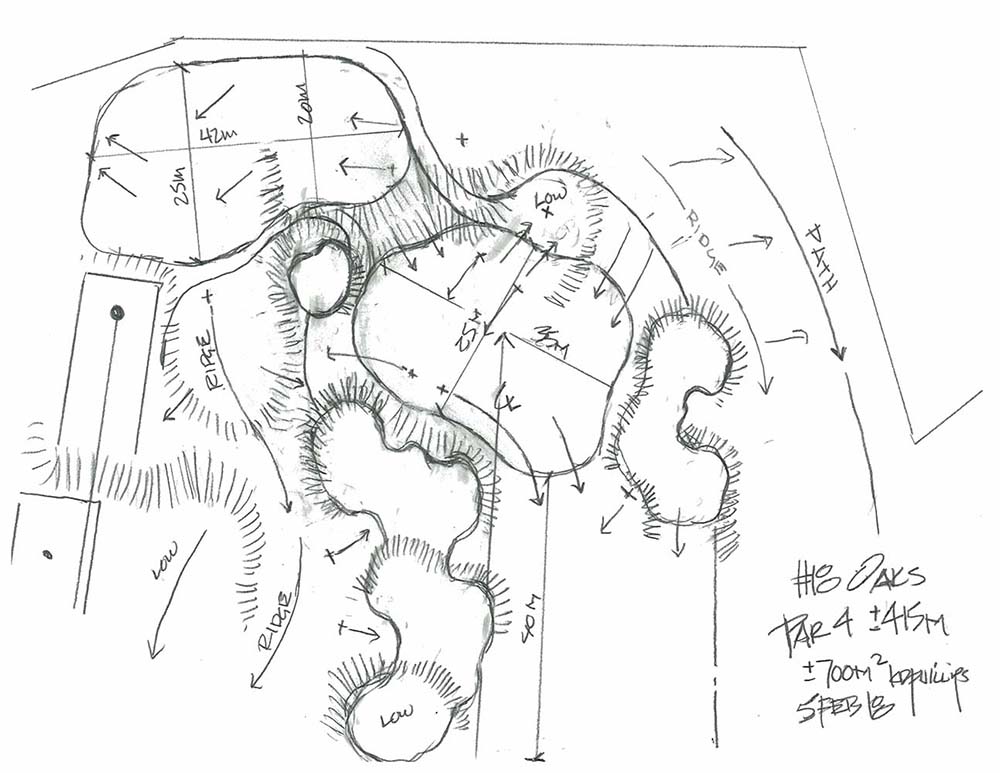PGA National Czech Republic
The course has been created by leading designer Kyle Phillips. Kyle has designed courses on every continent including three of the world’s top 100 – Kingsbarns, Scotland (42), California Golf Club, US (74), and South Cape, South Korea (90).
The course is a trailblazer in environmentally sustainable golf design and is operated by Troon Privé, the private club division of Troon Golf, the world’s foremost golf management company, with over 500 top-class courses worldwide.
The first nine holes were opened in August 2019. The full 18-hole course was opened in the summer of 2020.
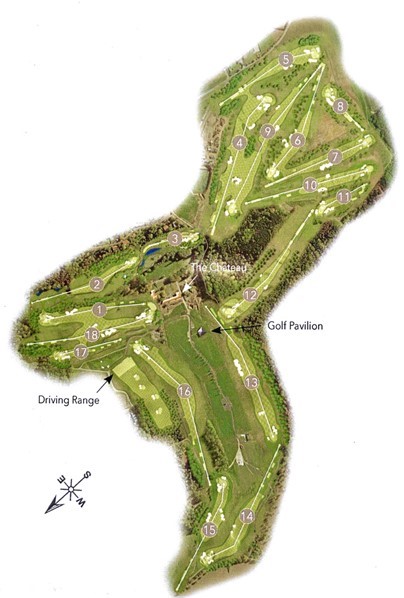
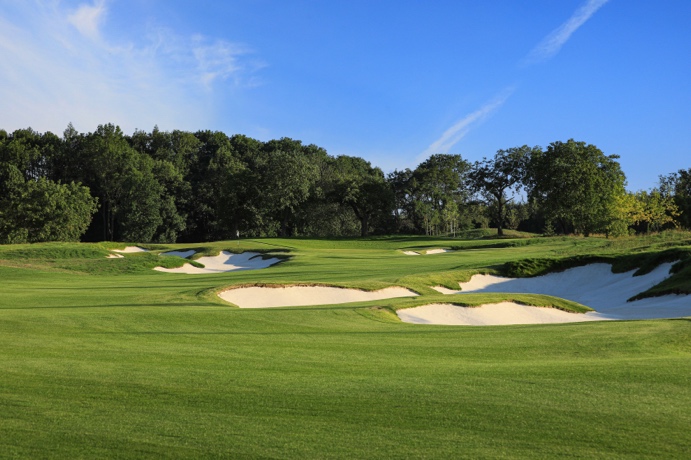
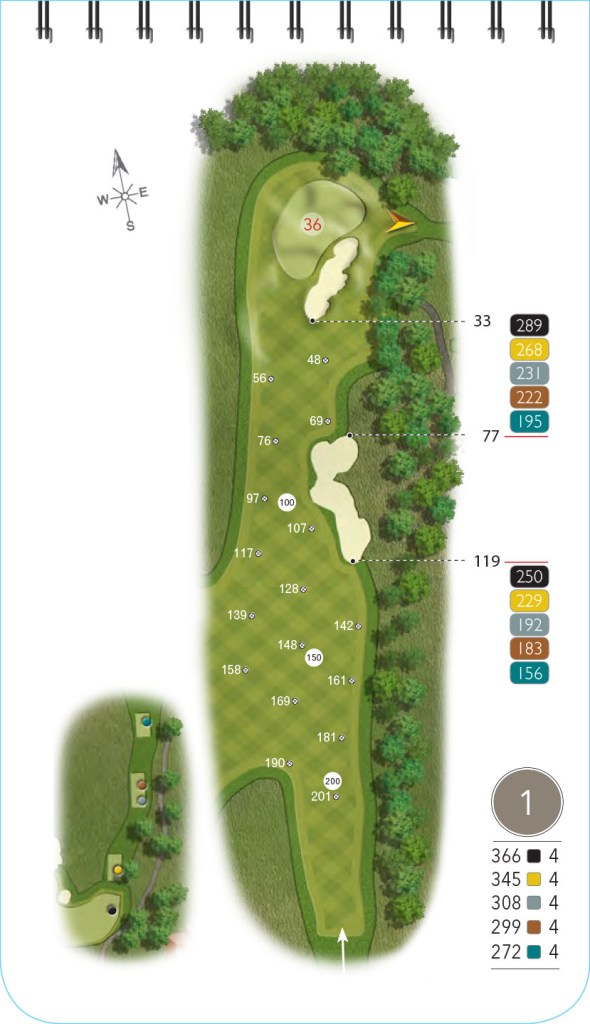
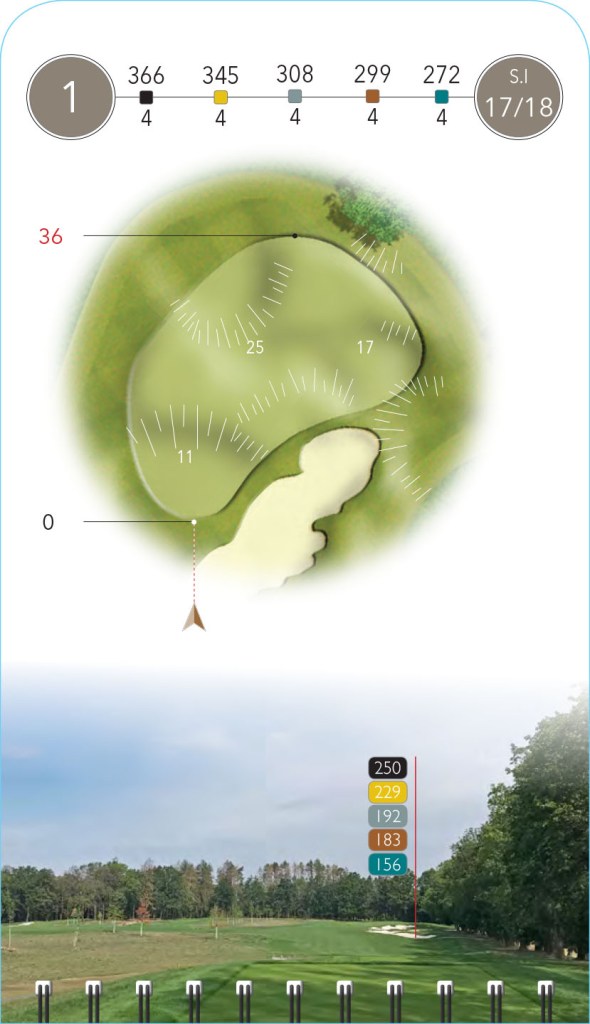
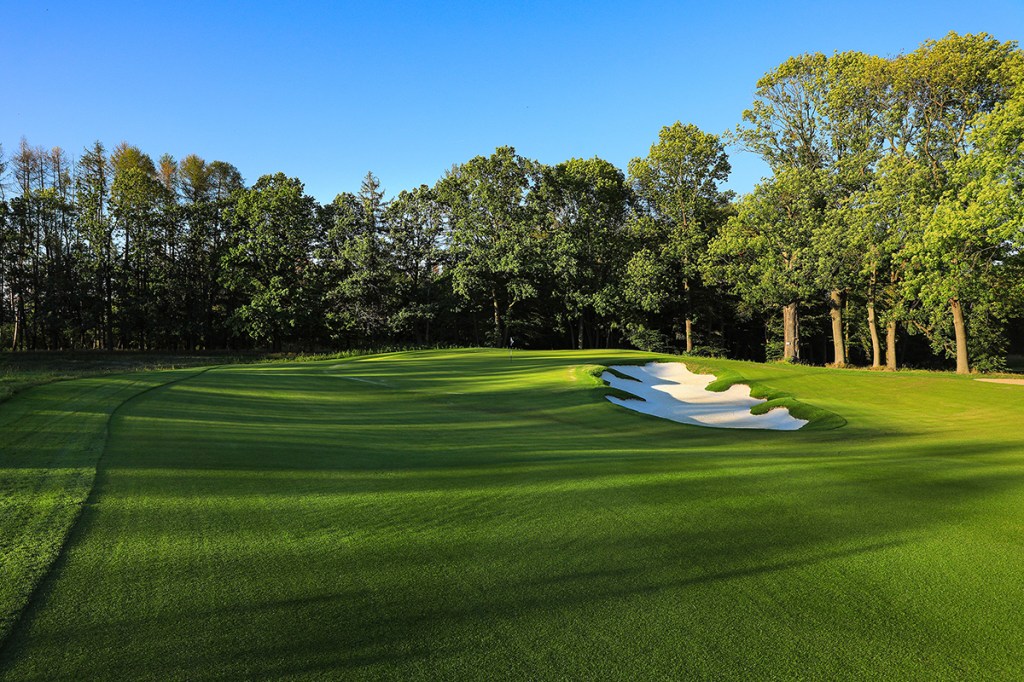
Pro’s tip:
Setting the tone for the course, our opener offers multiple strategies from different tees to match your skill level. The more obvious plan would be driver to left of the first bunker, but the fairway gathers balls towards the hazard and a short approach to a right-hand pin here is tricky. More prudently, play shorter from the tee, left towards the 18th fairway, leaving a direct although longer approach to the green, especially when the pin is at the back.
Designer’s notes:
This hole is designed to be a friendly opening hole for everyday play that can also be played as a drivable par 4 for professional events from the middle tees. The bunker on the right was extended during construction to tighten the landing area for the longer drive.
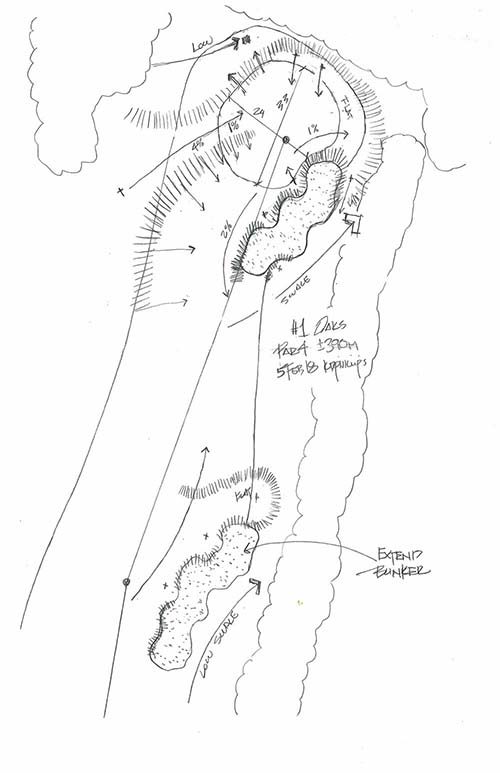
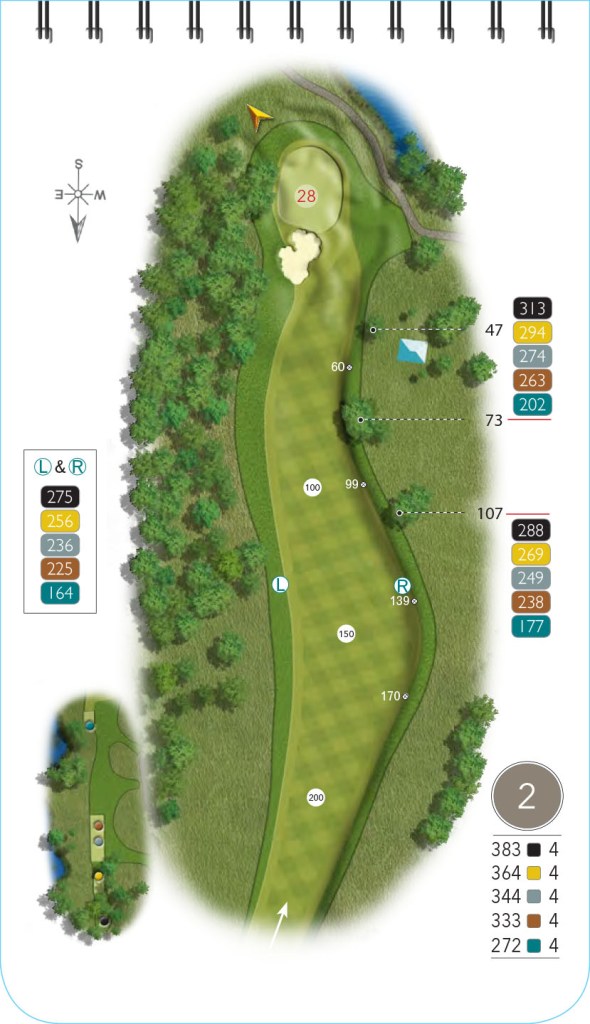
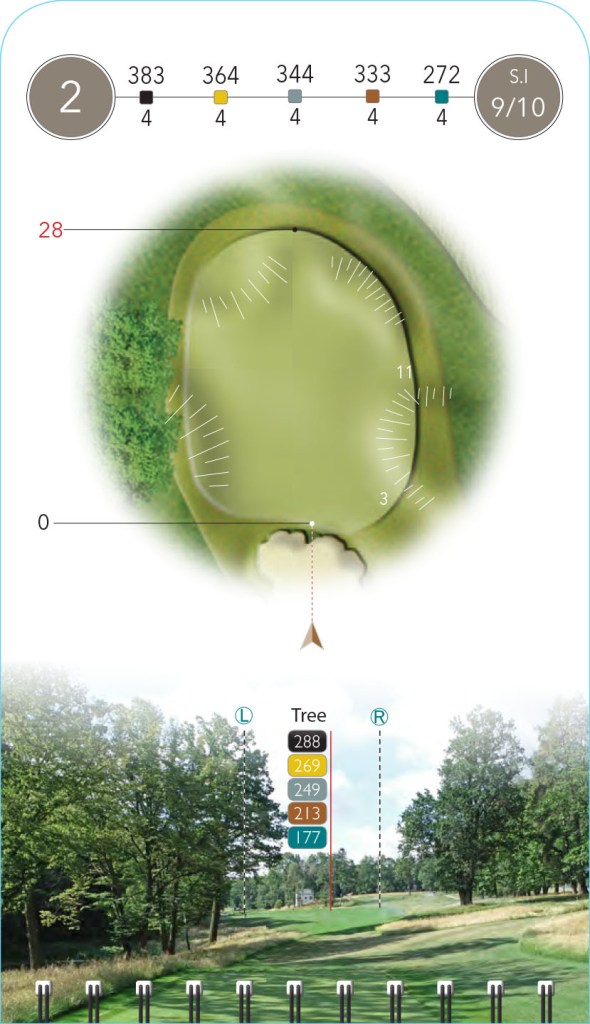
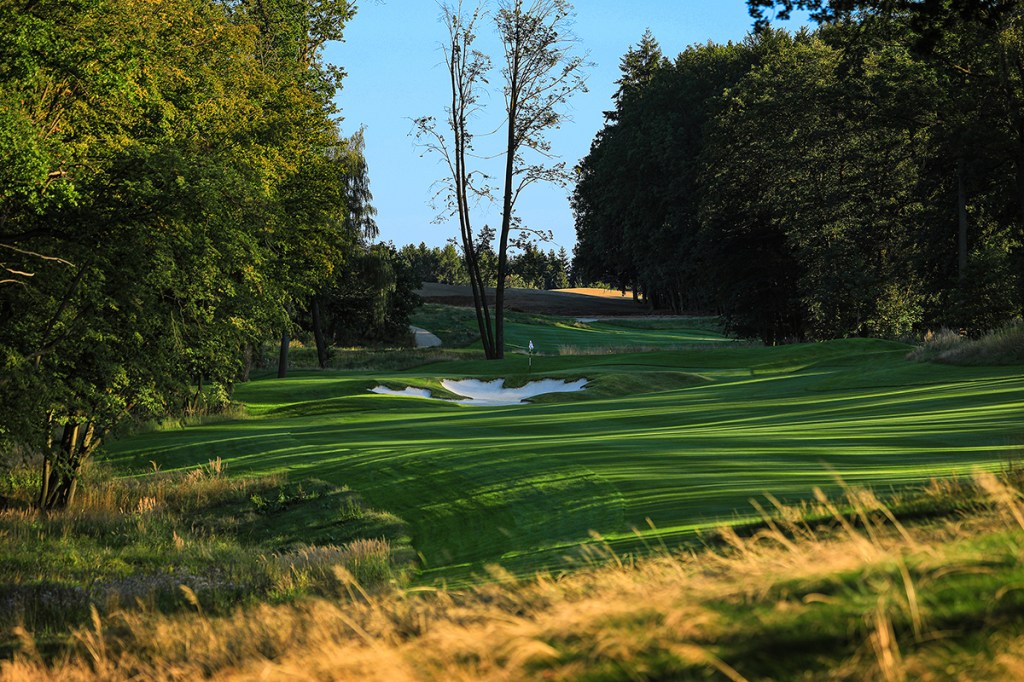
Pro’s tip:
Use the slope of the fairway to make your tee shot here much easier, playing right of centre. Longer players will prefer to play right to left, to help the ball reach the flat area of fairway. This ensures their second shot is not hampered by the trees in front of Milsna Cottage. Percentage play: approach the right side – this will allow errant shots to use the contours to finish nearer the generous putting surface.
Designer’s notes:
One of my favorite holes on the golf course. It plays longer than the yardage indicates. The lone bunker guards the front left of the receptive yet small green. During construction I removed the bunker behind the green in favor of a grass hollow.
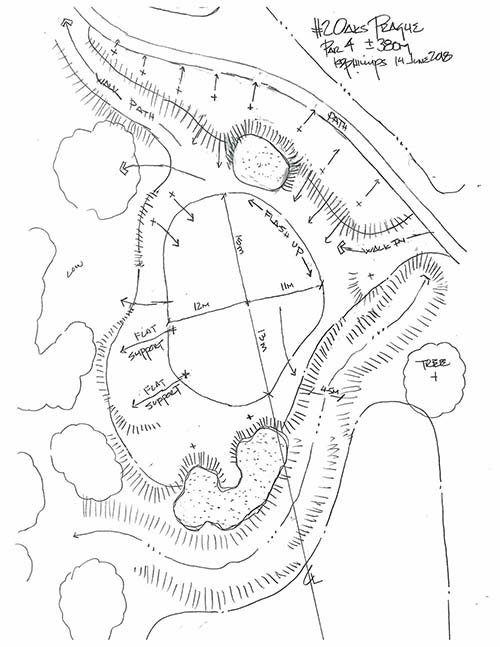
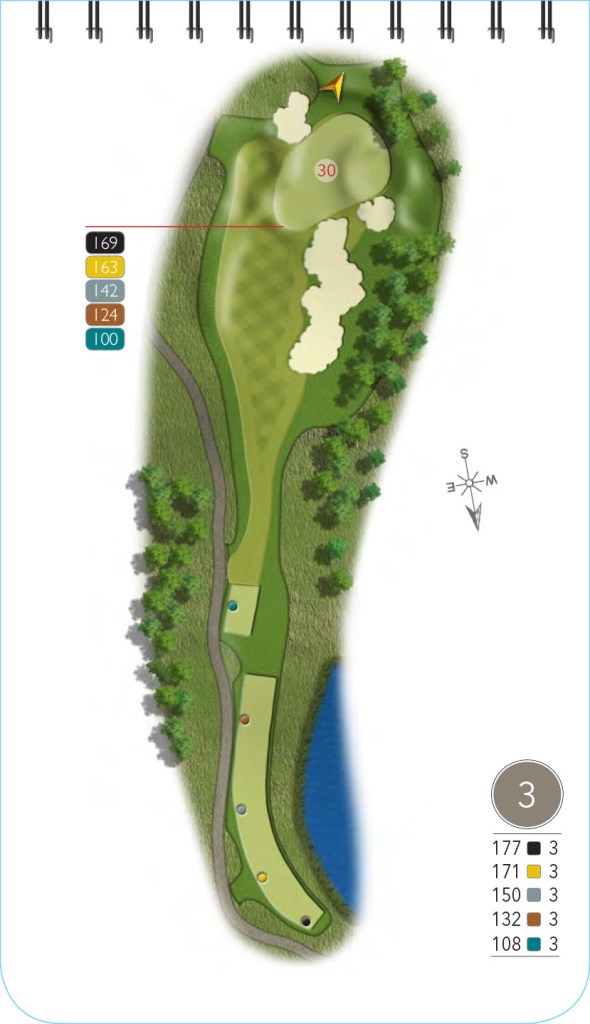
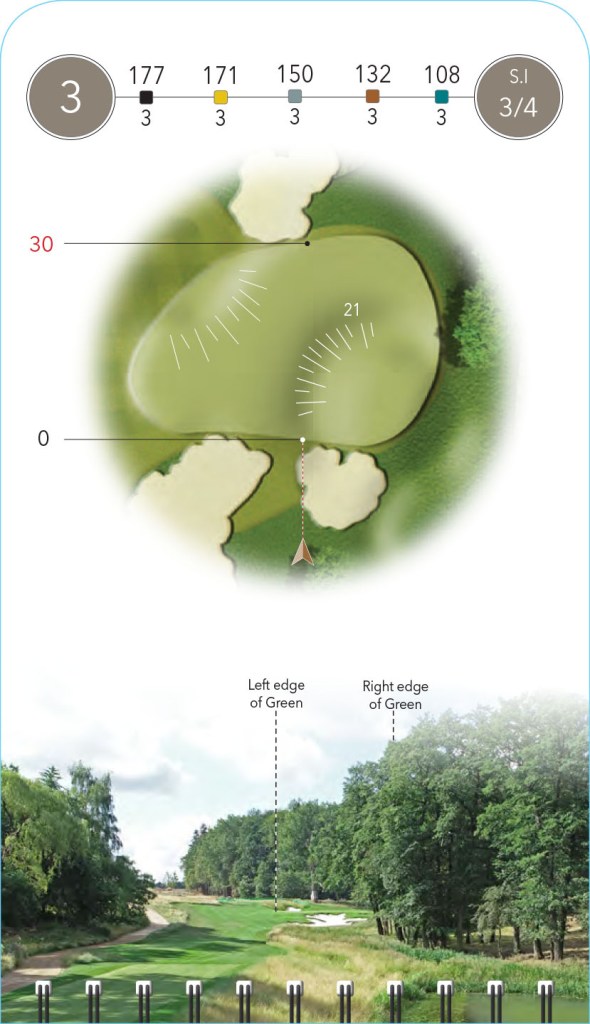
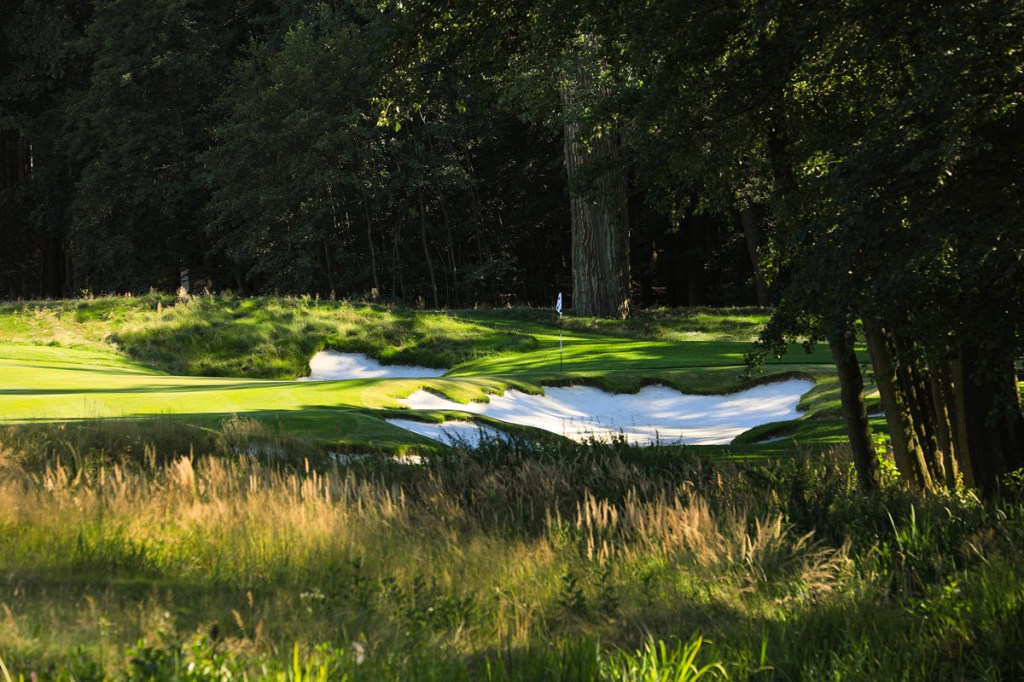
Pro’s tip:
Although intimidating from the back, the further forward your tee, the more the green opens up. Even with a right-hand pin position, the ball can be fed into the green using the slopes on the left. Take care not to overshoot and find the bunker at the rear.
Designer’s notes:
The illusion created by the long bunker in front of the green makes the hole appear shorter than it plays. The green is much larger than it appears from the tee. The front left pin can be challenged, but the back right pin is to be feared.
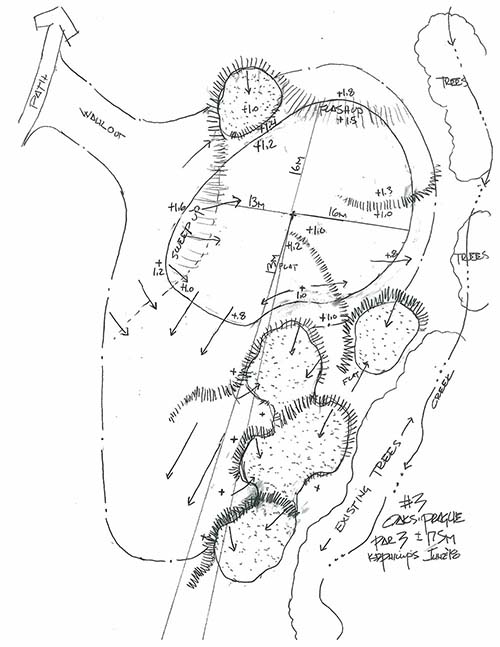
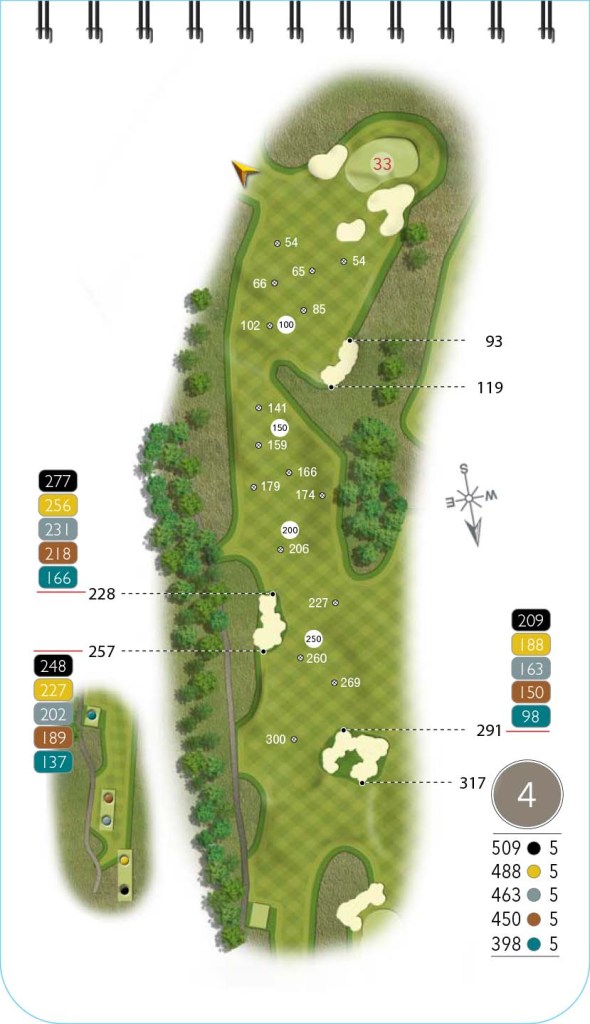
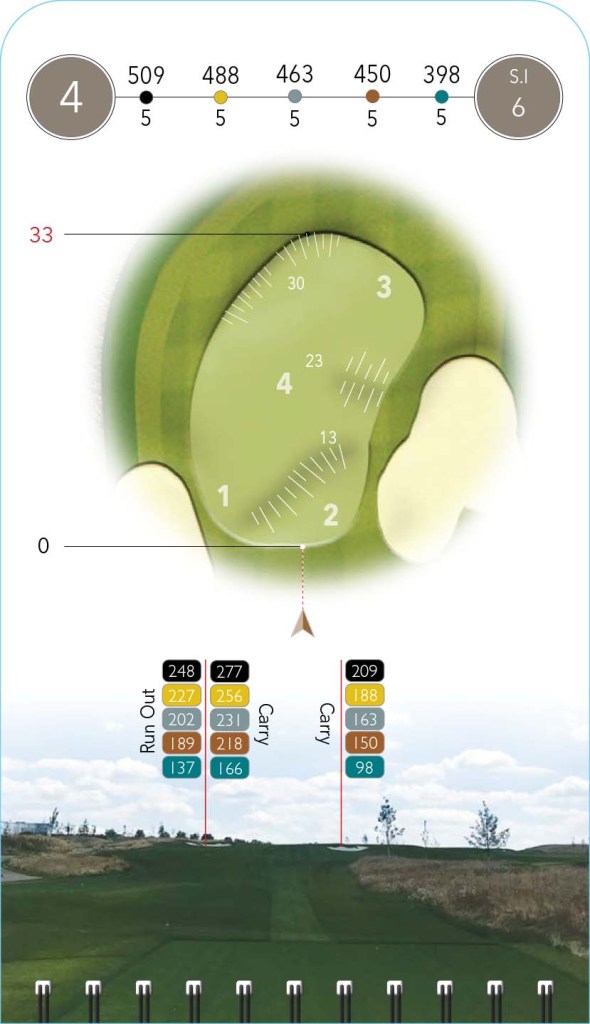
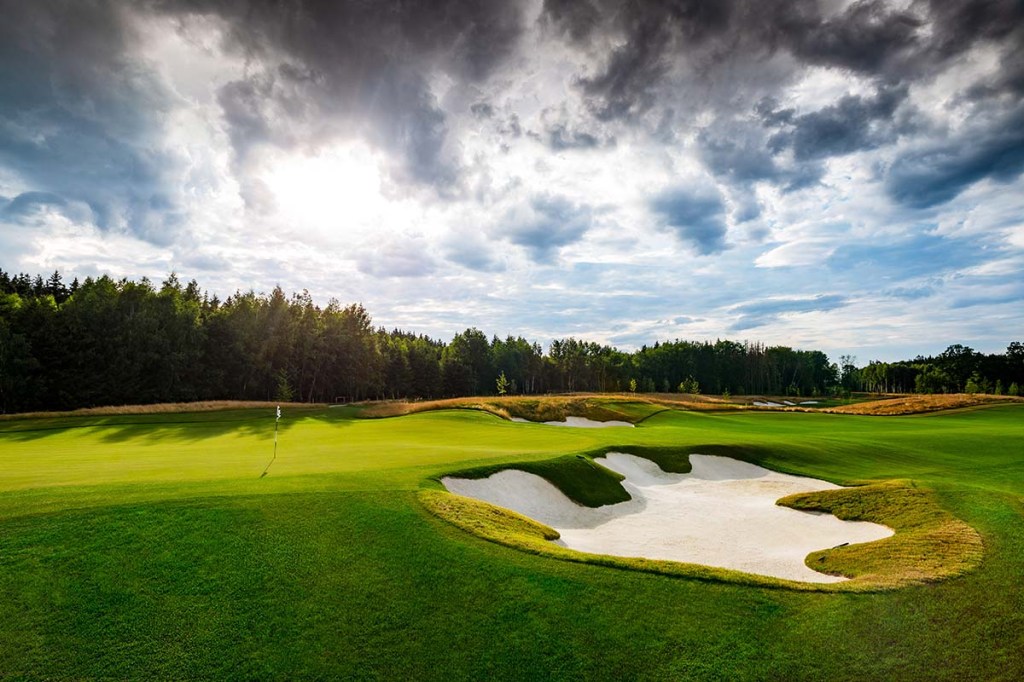
Pro’s tip:
The first par 5 gives you a chance to open your shoulders: the large landing areas are separated by cleverly-positioned bunkering. The ideal drive is close to the left bunker, giving the option either to lay up short of the rough that crosses the right of the fairway, or to carry this to leave a short approach from the left half of the fairway. Longer hitters can drive over the central bunker, and then reach the green in two over the sea of greenside sand.
Designer’s notes:
In order to reach this uphill par 5 in two shots, the drive hinges off of the left side bunker. I positioned it so the longest drivers would be tempted to carry it, but there is ample room to the right to snuggle up near it. During construction I slid the green slightly more to the right to create a wonderful risk/reward pin on the right.
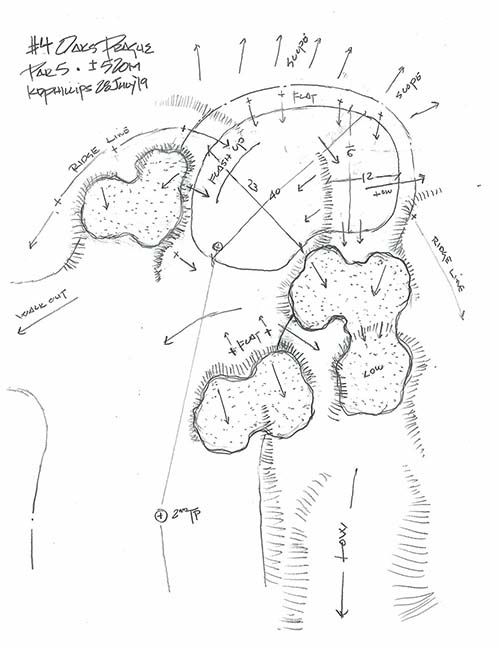
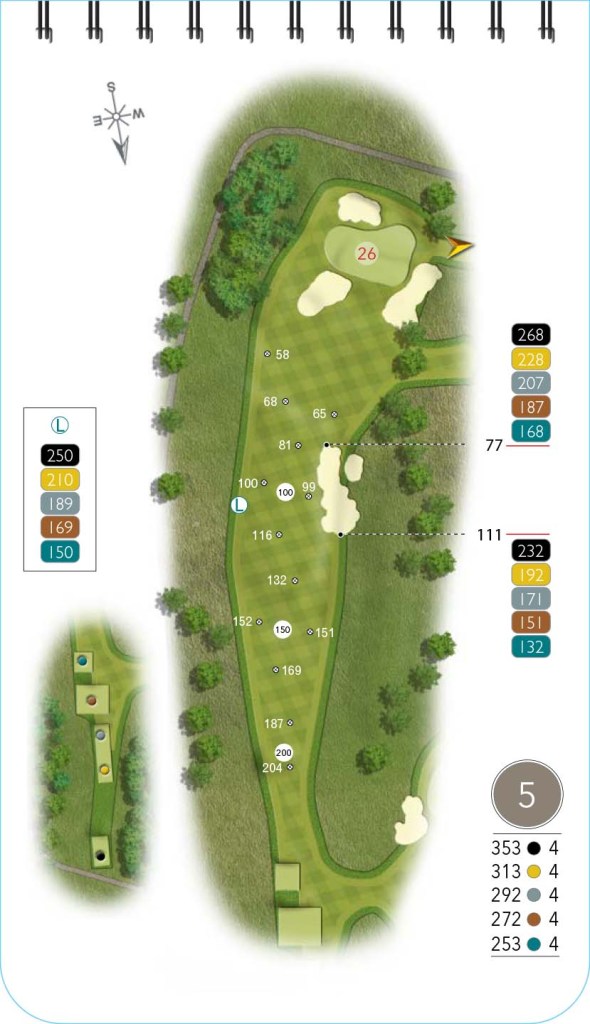
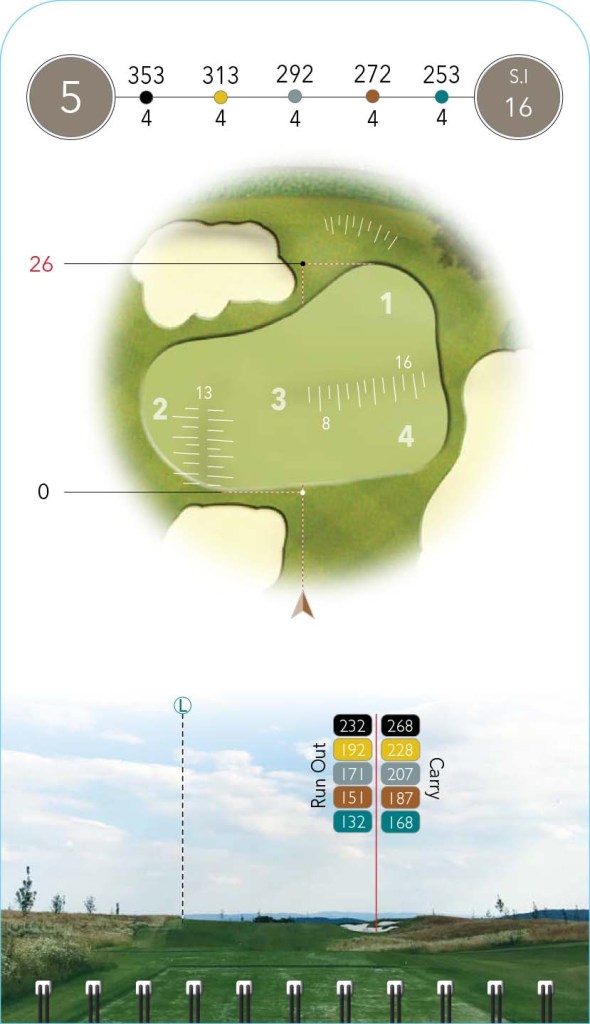

Pro’s tip:
A great short par 4, with the finest view from the course at the apex of the dog leg, also the ideal place from where to play a short second down to the shallow green. Alternatively, drive over the rise to leave a much shorter pitch to the green. Beware: the pin location will greatly affect the productivity of this tactic.
Designer’s notes:
The small bunker set high in the hill is the perfect shot line when attempting to drive the green. Even though it is possible to carry this bunker from the tee, beware of the long fescue rough that extends 20 meters down the slope behind it. The width of the green provides a nice variety of angles for the approach shot.
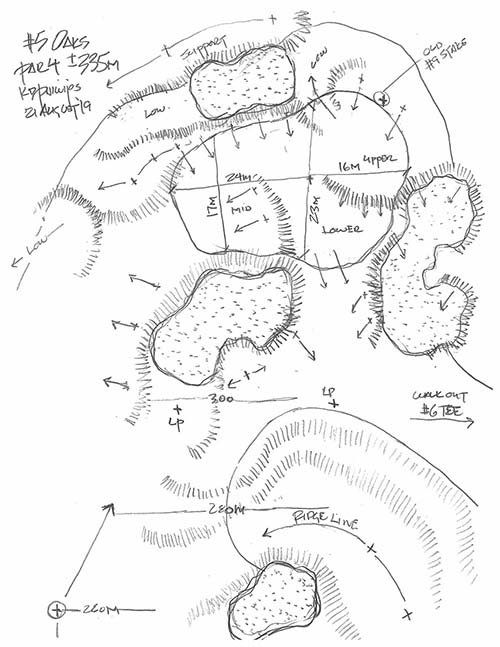
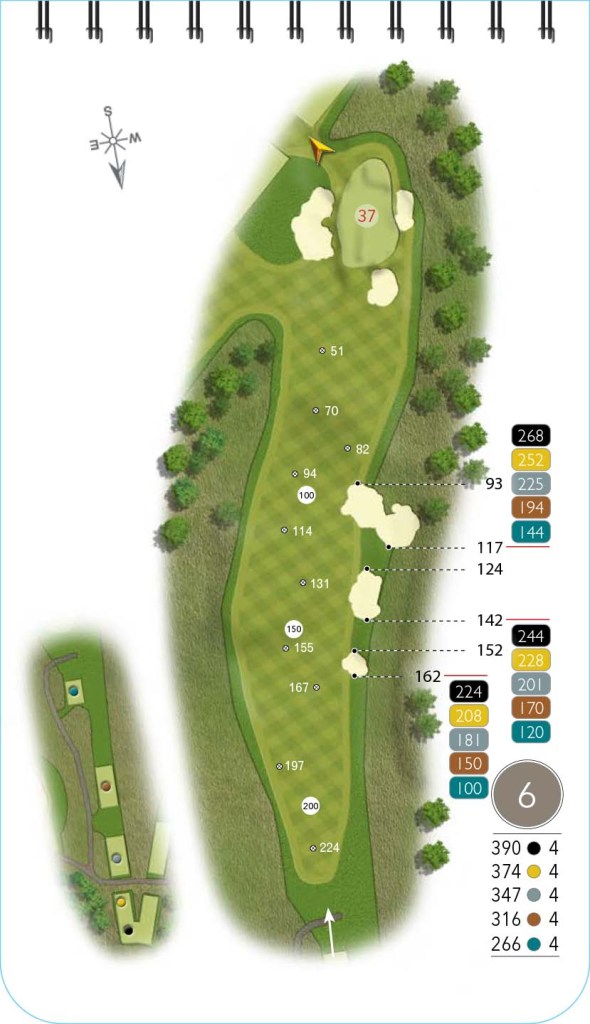
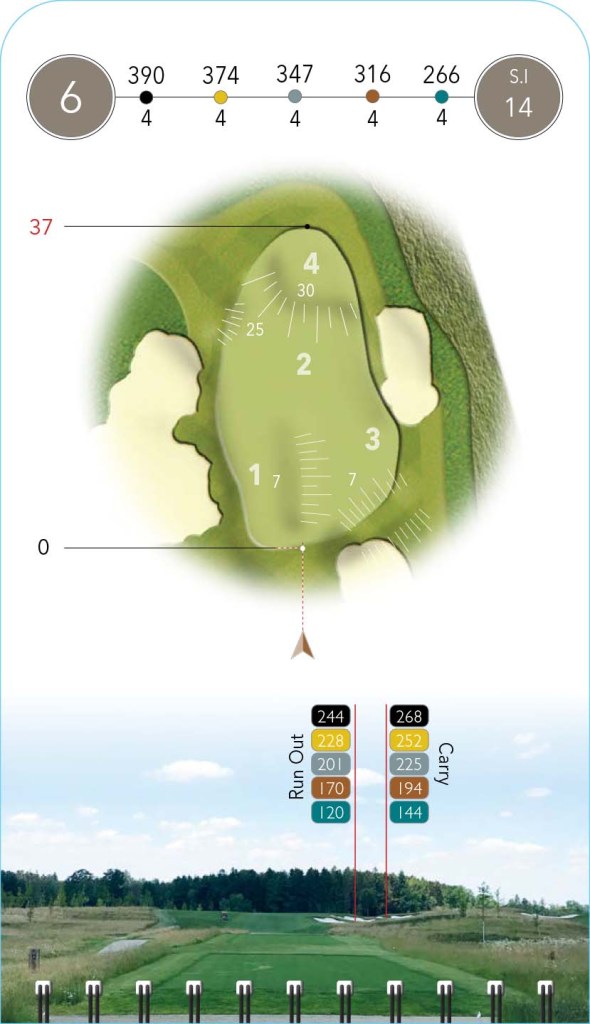
Pro’s tip:
Although inviting, this fairway can deceive you into playing too aggressively. Too long a tee shot to the left away from the bunkers is greeted by deep rough, as the hole turns sharply right over the rise. Better to leave the ball on the top of the hill, level with the middle bunker of the three, and from there to play downhill to the heavily-guarded green complex.
Designer’s notes:
Avoid the three bearish bunkers that guard the inside of the dogleg. Whether it is the 1st baby bear, 2nd mama bear or the 3rd and largest papa bear bunker they are each capable of eating your lunch. From the left side of the fairway the green opens up for the preferred approach angle.
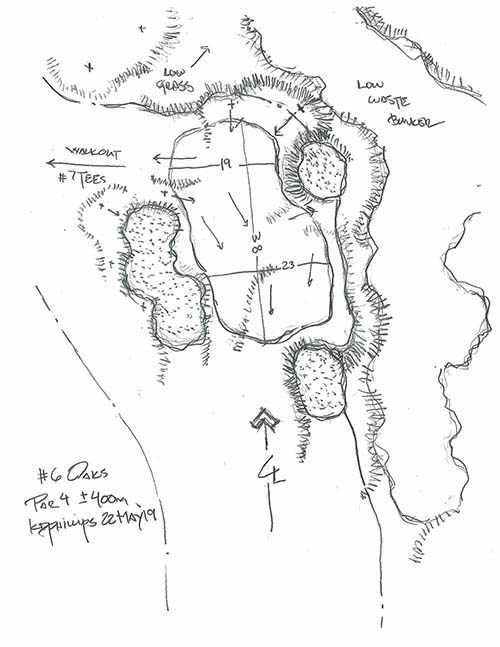
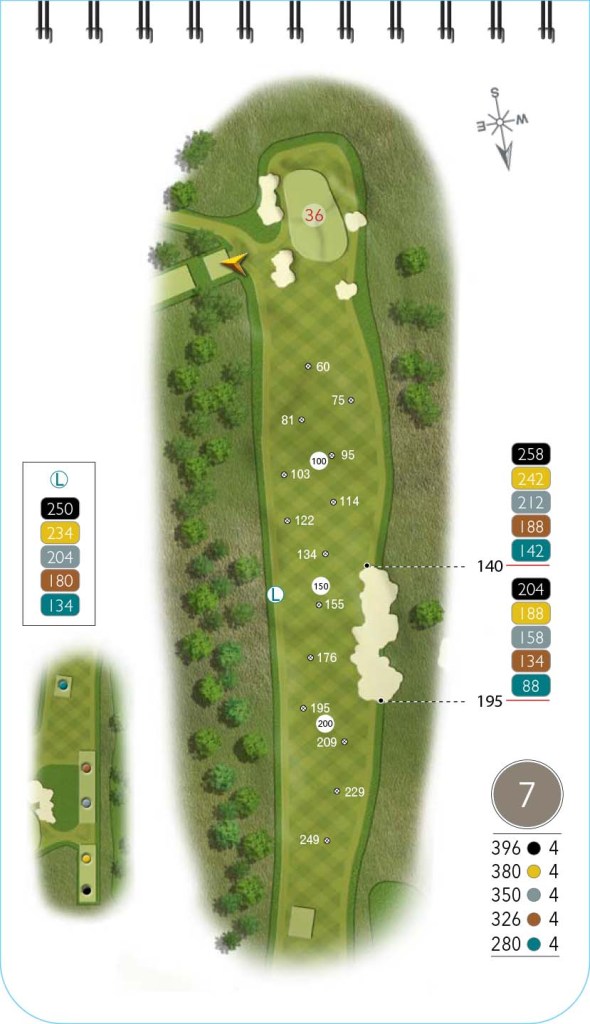
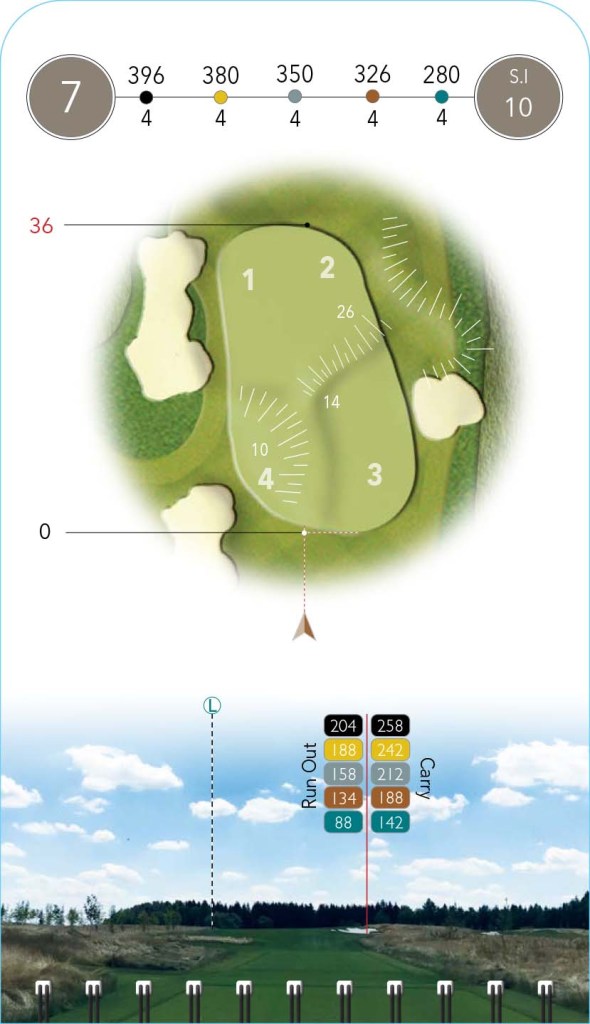
Pro’s tip:
This hole plays very different depending on the wind conditions. Ideally, drive far enough to see the green for your approach: the fairway opens up after the bunker, leaving shorter hitters a good chance to run the ball down to the well-segmented putting surface – so your shot selection into the green will greatly depend on the pin location.
Designer’s notes:
A good driving hole that allows players to play past the bunker on the right to the crest of the hill setting up a downhill approach shot. This is one of my favorite green complexes on the course. Pin positions on the left side of the green are designed to be more friendly and right side pins to offer more of a challenge.
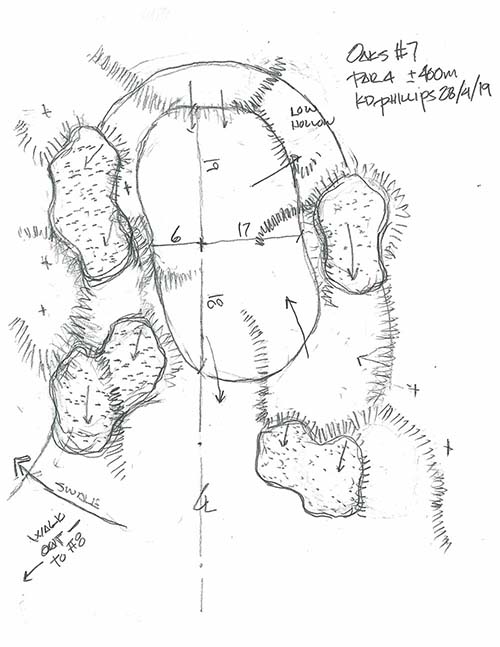
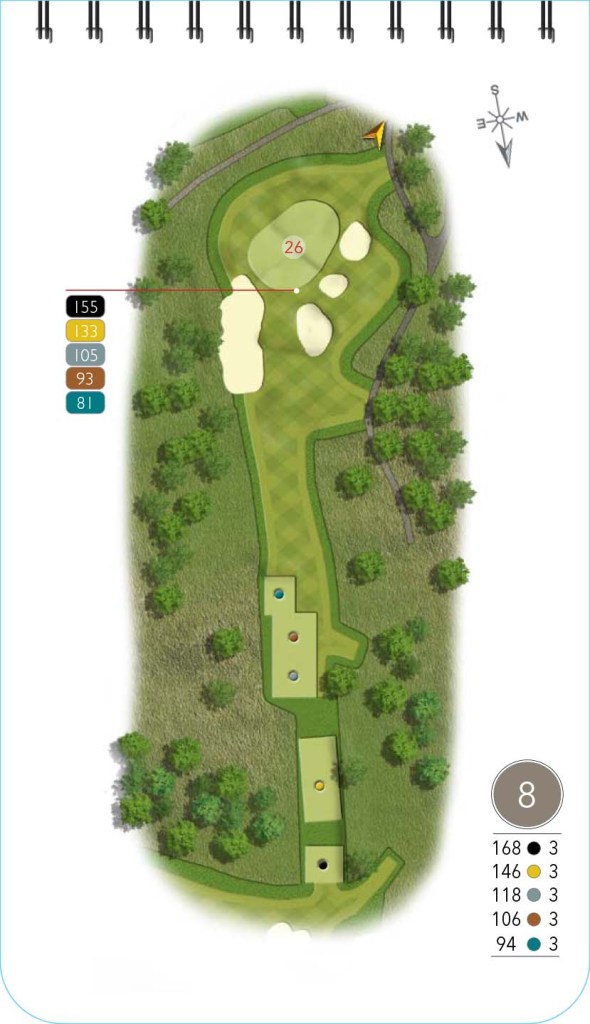
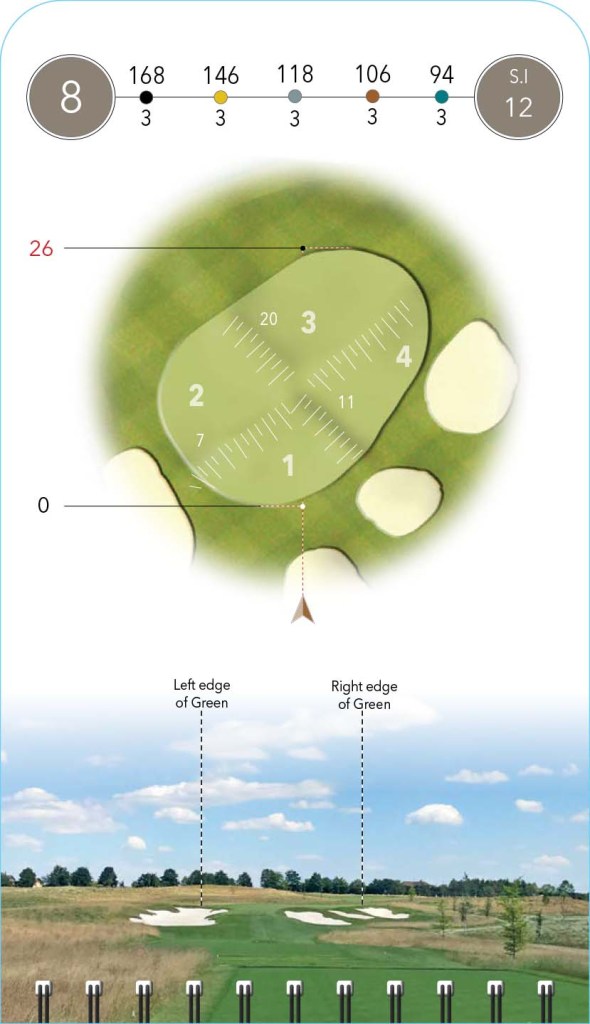
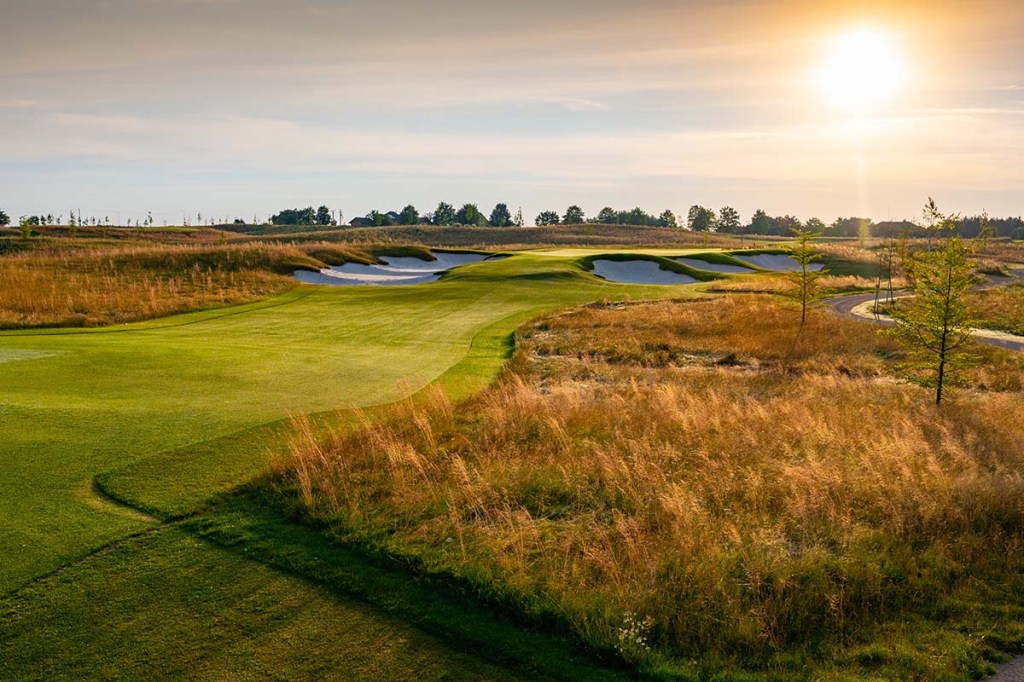
Pro’s tip:
Although a short par 3, the raised green offers little view of the bottom of the flag, and the bunkers await anything but a full shot. Strategies include choosing whether to run the ball onto the front of the green through the narrow funnel, or playing safe to the back right of the green, from where it’s a tricky putt back down to any forward pin.
Designer’s notes:
I always enjoy designing short par 3 holes. It is an opportunity to create subtle angles and precise pinning areas. This hole delivers on both. It is clearly an opportunity for shot-makers to be rewarded with birdie opportunities.
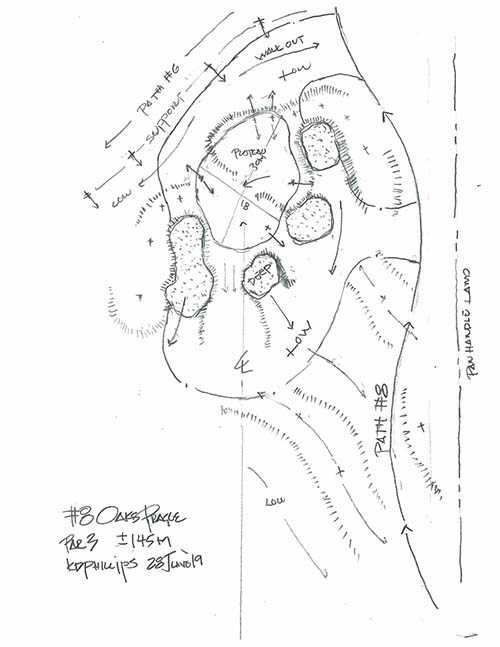
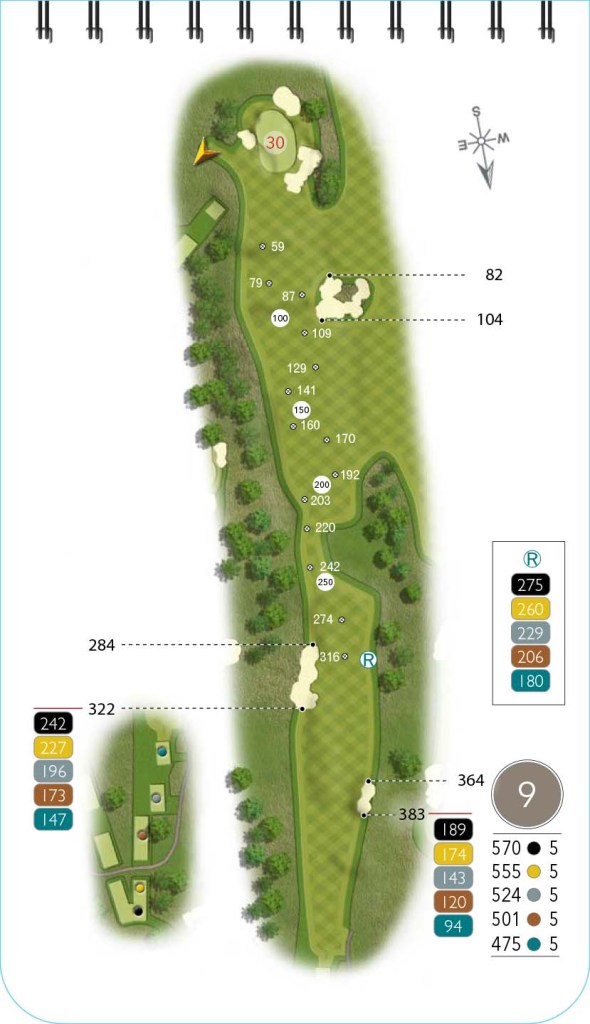
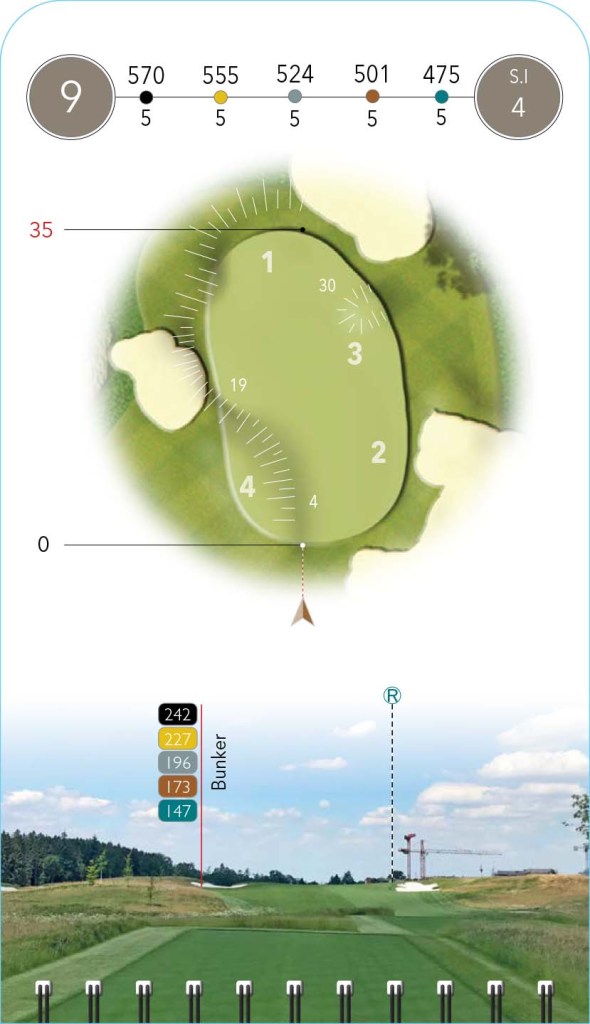
Pro’s tip:
Longer hitters should take care here: a rough area, invisible from the tee, pulls across the fairway within range. Avoid both the fairway bunkers, but a drive closer to the left one offers an easier second. Fairway width should make it easy to steer clear of the bunker 100m out, leaving a chip or short pitch to the heavilycontoured putting surface.
Designer’s notes:
To reach this par 5 in two shots from the championship tee, a drive of 290-300m just beyond the crest of the hill sets up the perfect downhill second shot. The fairway runs out after 310m. A left angle approach to the green is preferred.
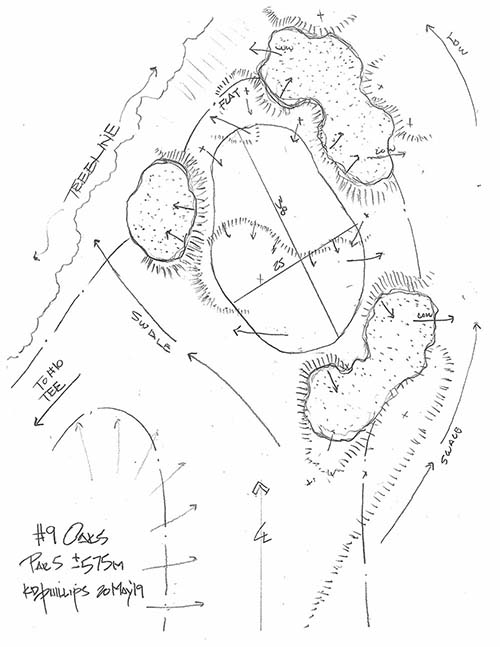
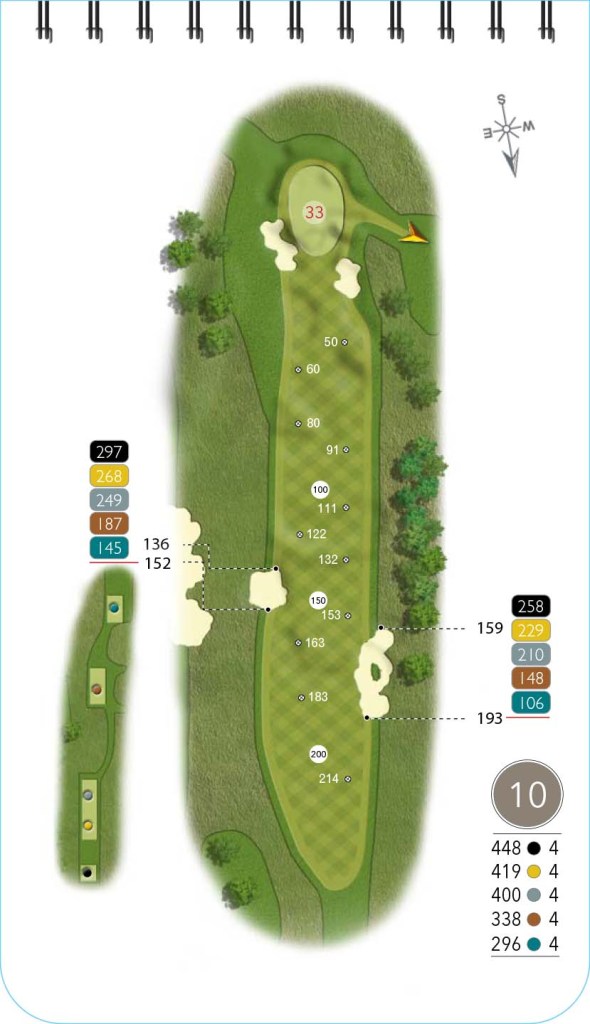
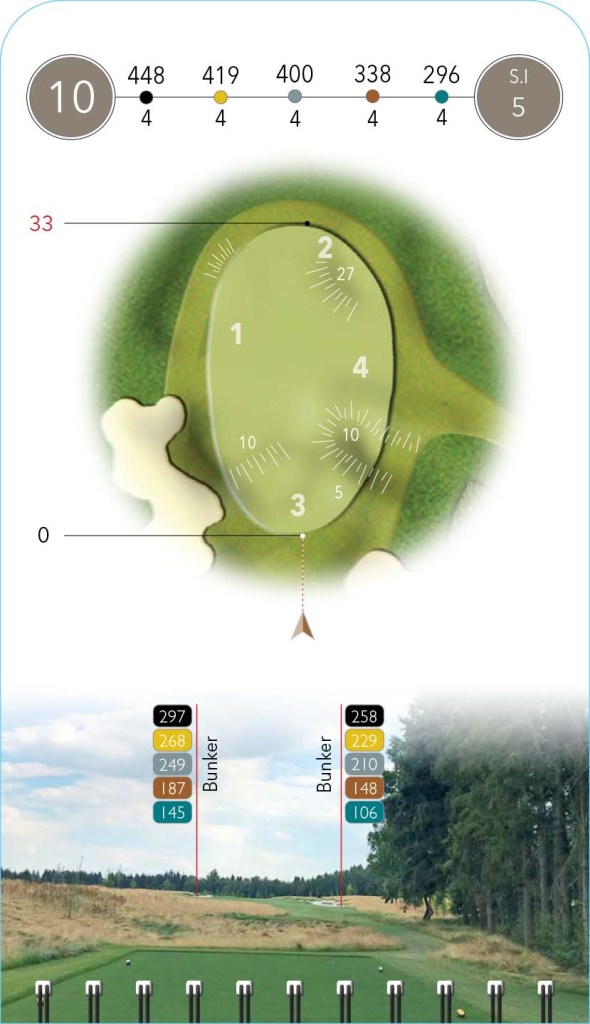
Pro’s tip:
The intimidating view off this tee is a clever deception to what is actually a shorter carry over rough than it appears. Leave your tee shot short of the left-hand bunker, which will offer an uphill approach to a green that feeds balls to the left, making it an easier play than it first seems.
Designer’s notes:
Favor the left side of this generous fairway off the tee to avoid the large bunker on the right. From the left side of the fairway the green opens up for a long approach.
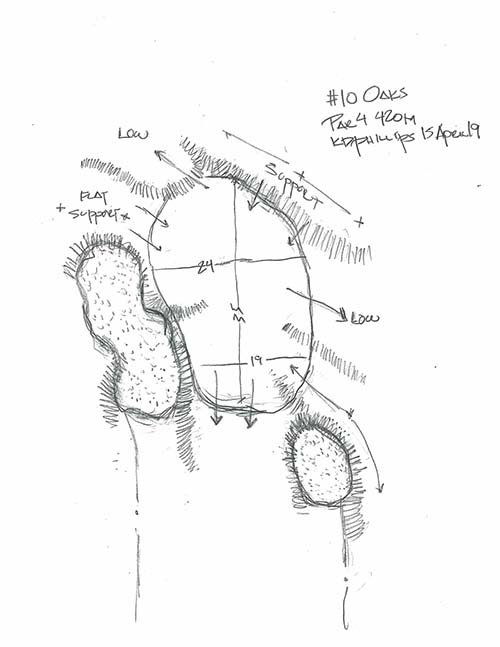
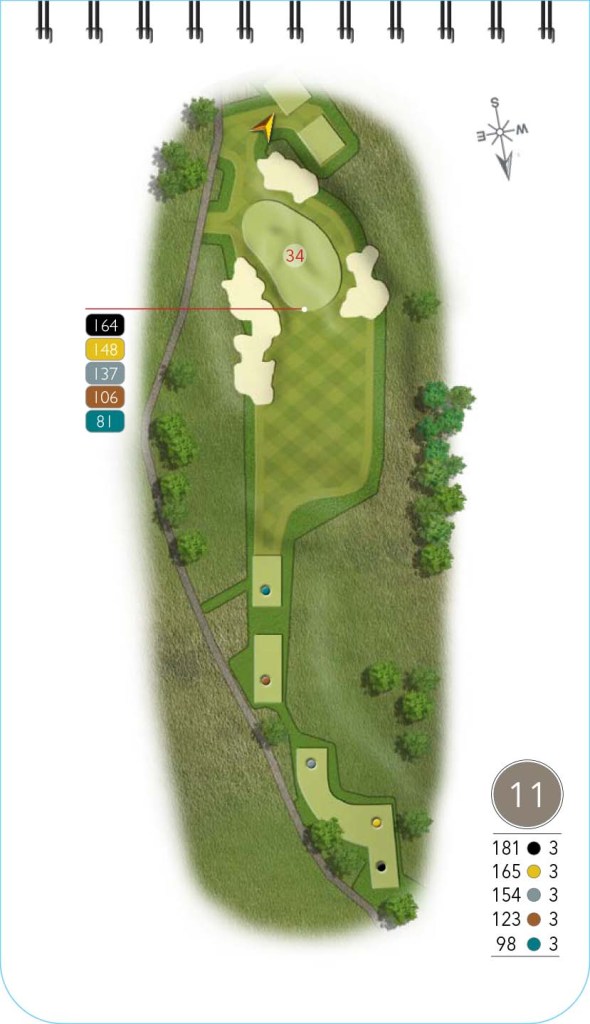
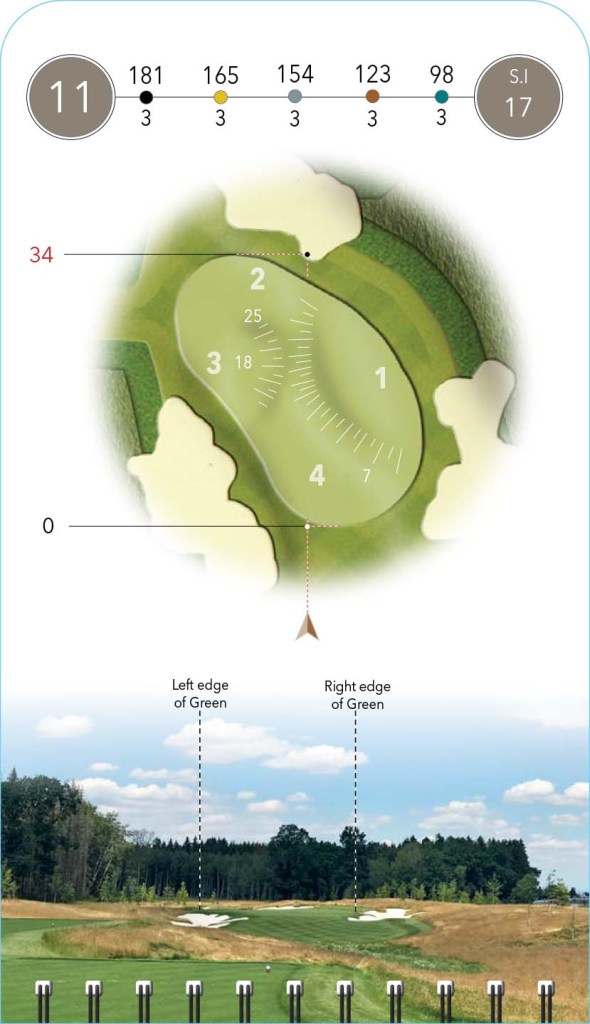
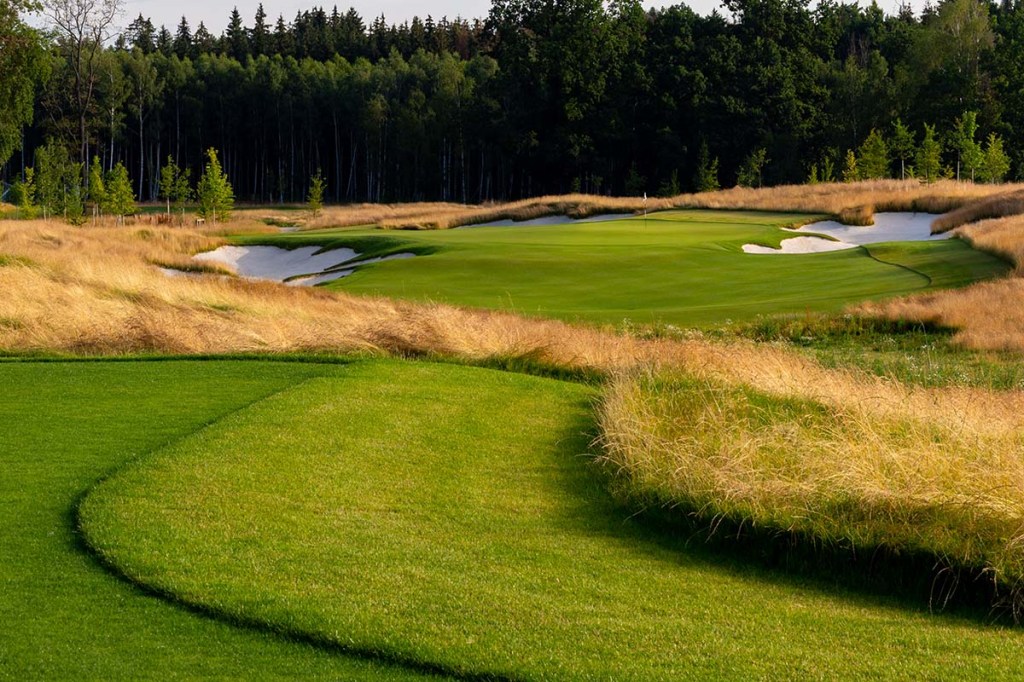
Pro’s tip:
Arguably one of the most beautiful holes, its front left bunker should be avoided at all costs. The green slopes from right to left, so even a pin tucked behind the bunker is approachable for a well-struck shot. Shorter hitters can make use of the large fairway leaving an easy chip, delivering a good chance to save par.
Designer’s notes:
Lovely downhill par 3 to a large well bunkered green. Take care when the pin is placed back left as the green falls to the back and left from the central spine.
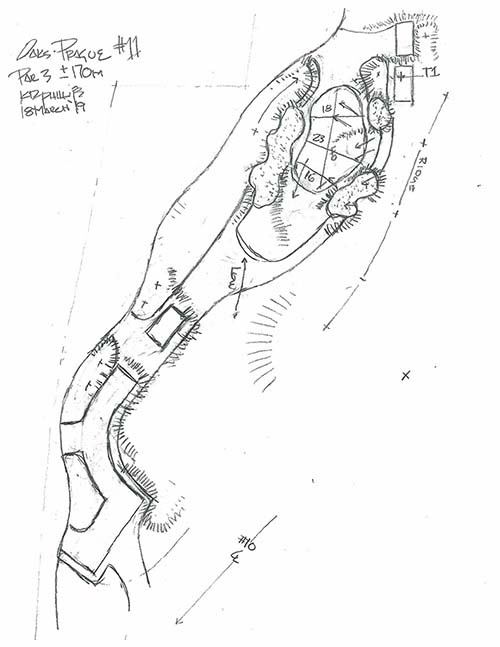
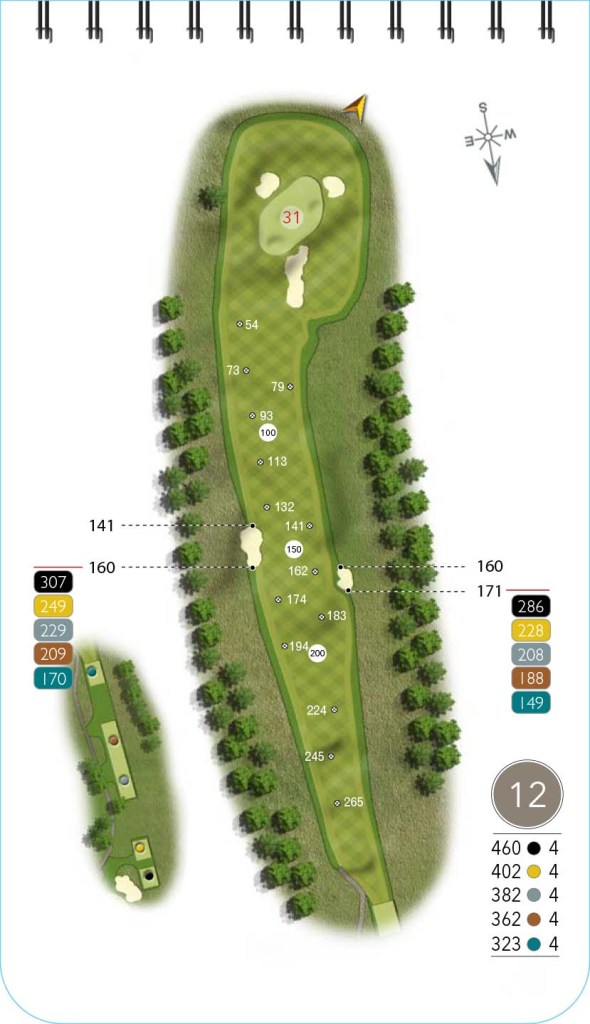
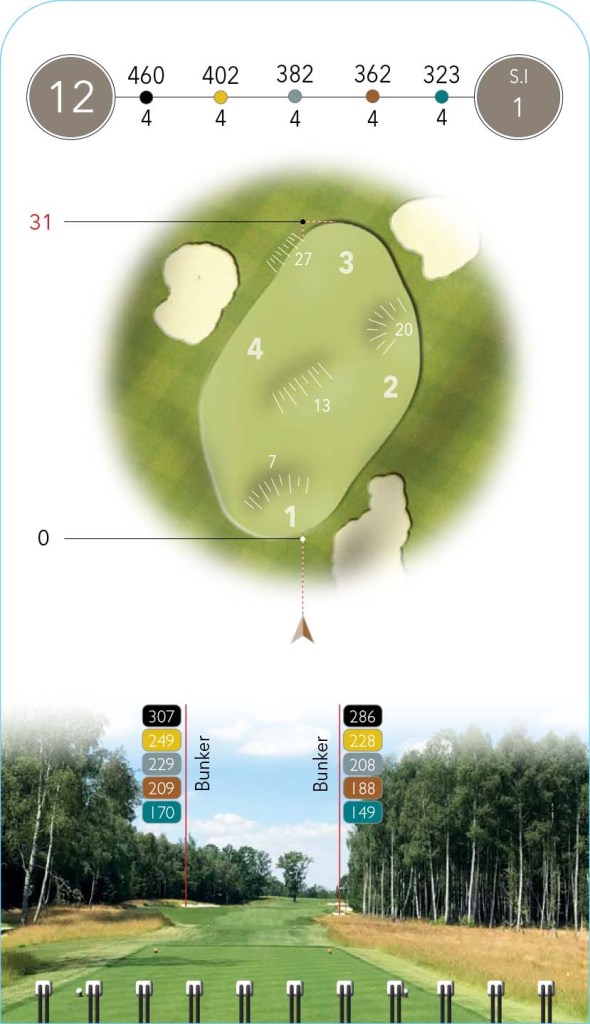
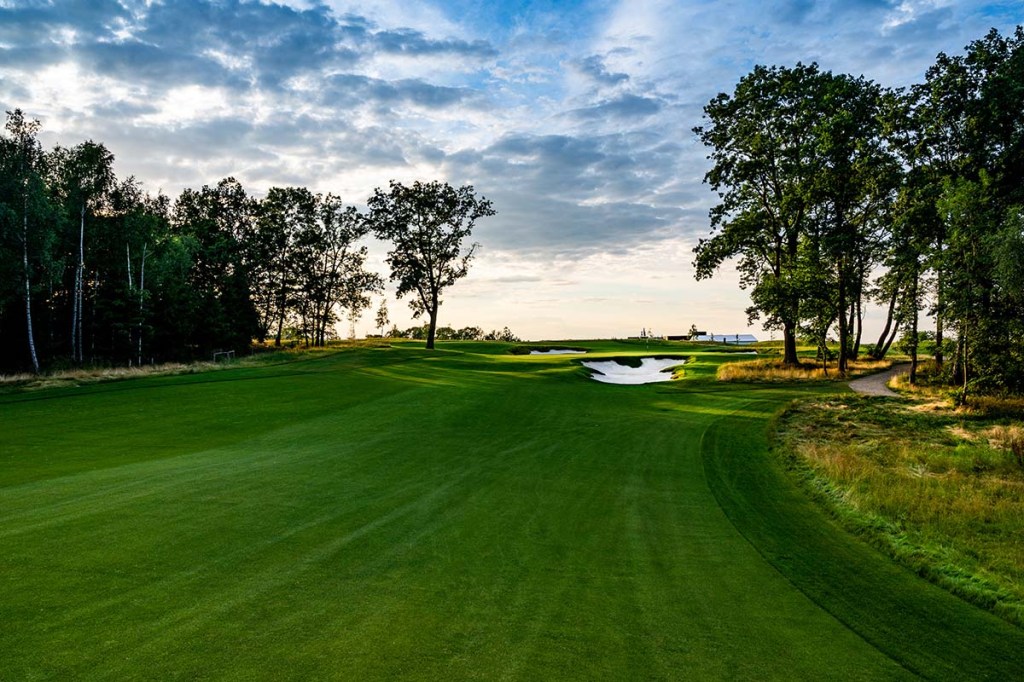
Pro’s tip:
From the back tees probably the Czech Republic’s toughest hole, the long fairway here is narrower than most on the course. Best to drive towards the left bunker, opening the green up for your approach. Then aim at the large tree left of the green to either use the slopes or leave an easier chip. A wonderful hole: par is a great achievement for any player.
Designer’s notes:
Cut through the woodland, this long par 4 is the most demanding drive on the course. If you can pass through the “”eye of the needle””, the 2nd shot opens up on the left side of the green.
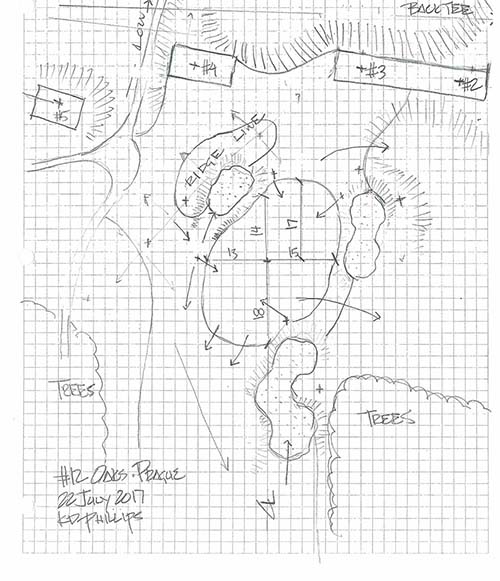
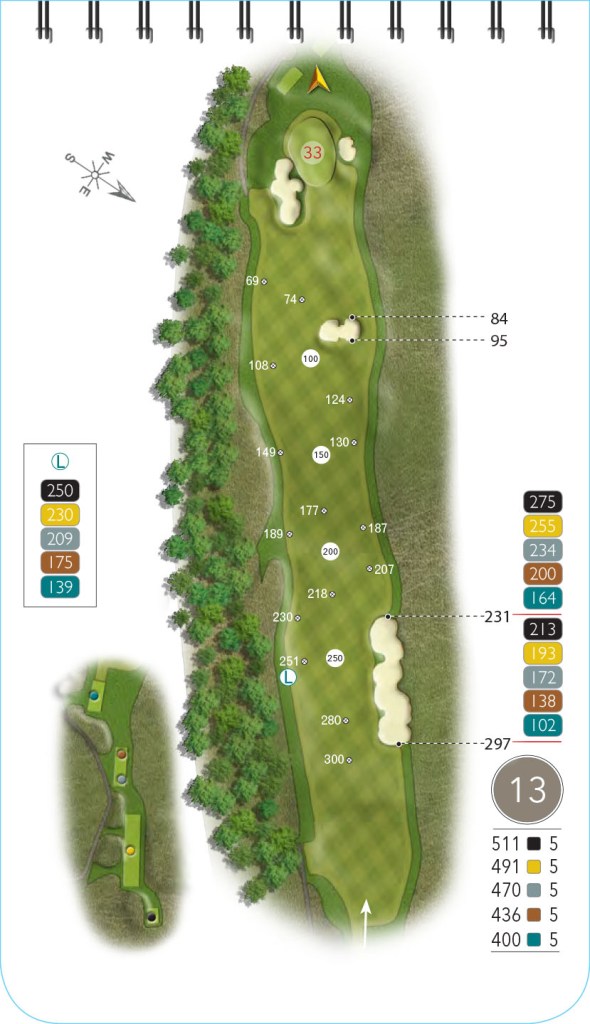
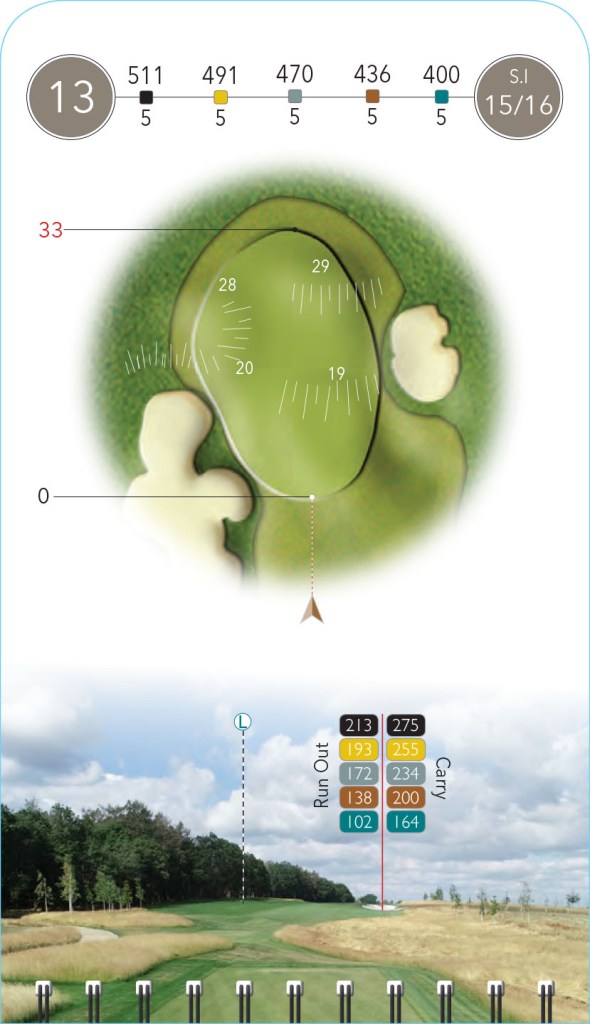
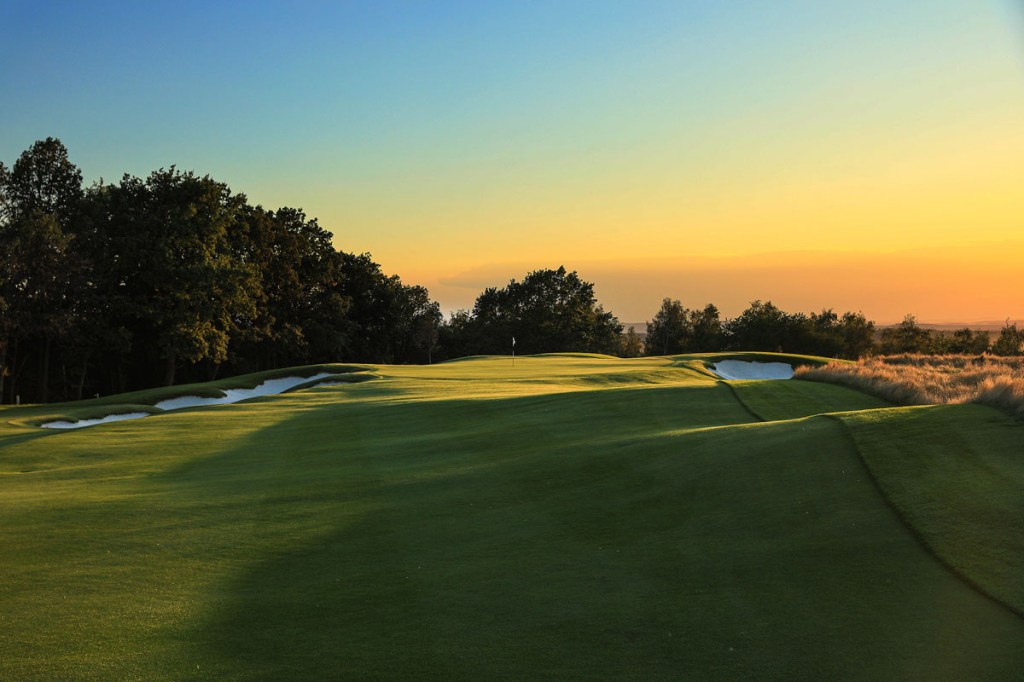
Pro’s tip:
A respite before the challenging finish: enjoy the wide fairway here all the way to the green. But take care: the first two bunkers easily devour lazy shots. When deciding on from where it’s best to approach the green, carefully note the pin location: a left flag is impossible to approach from the woodland side of the fairway. A relatively flat putting surface awaits, although the greenside bunkers are devilish.
Designer’s notes:
With a good drive up the left-hand side this could be your lucky number to make a birdie. The elevated plateau green has a friendly approach and amazing views over the city of Prague.
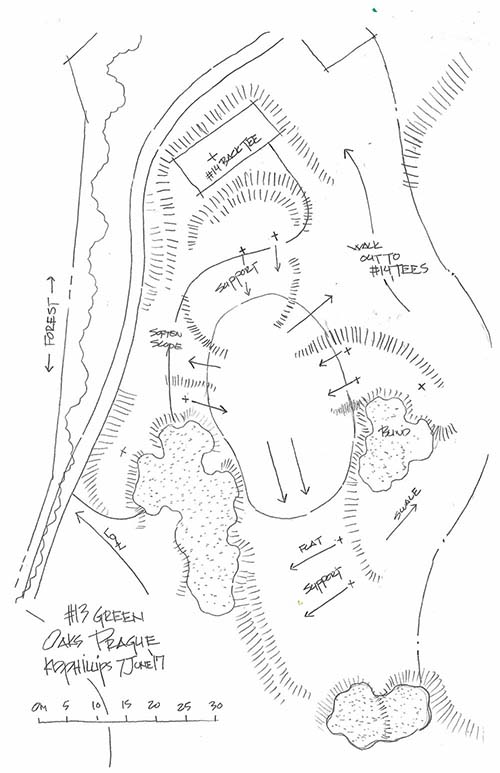
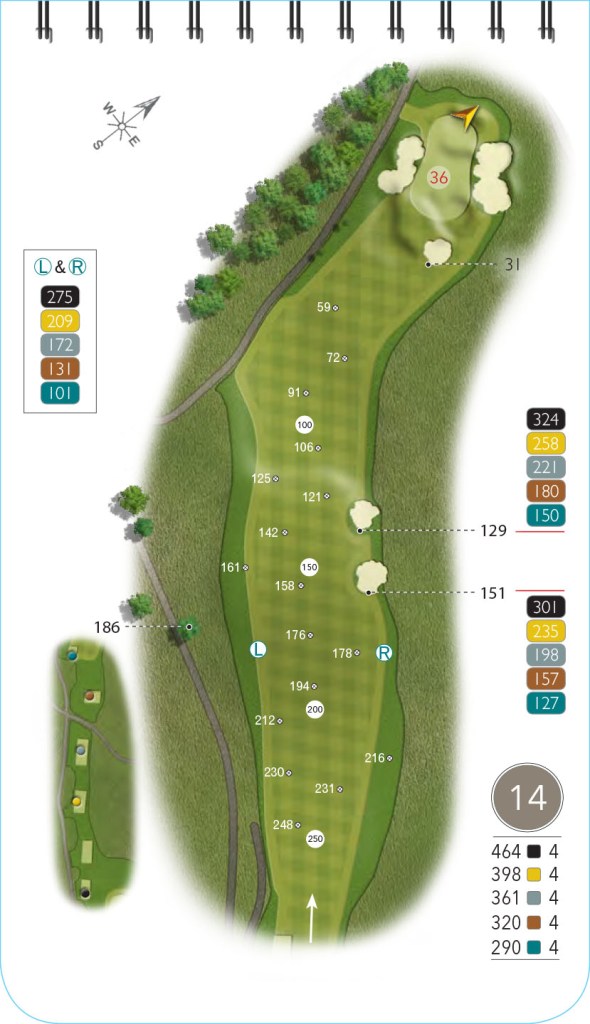
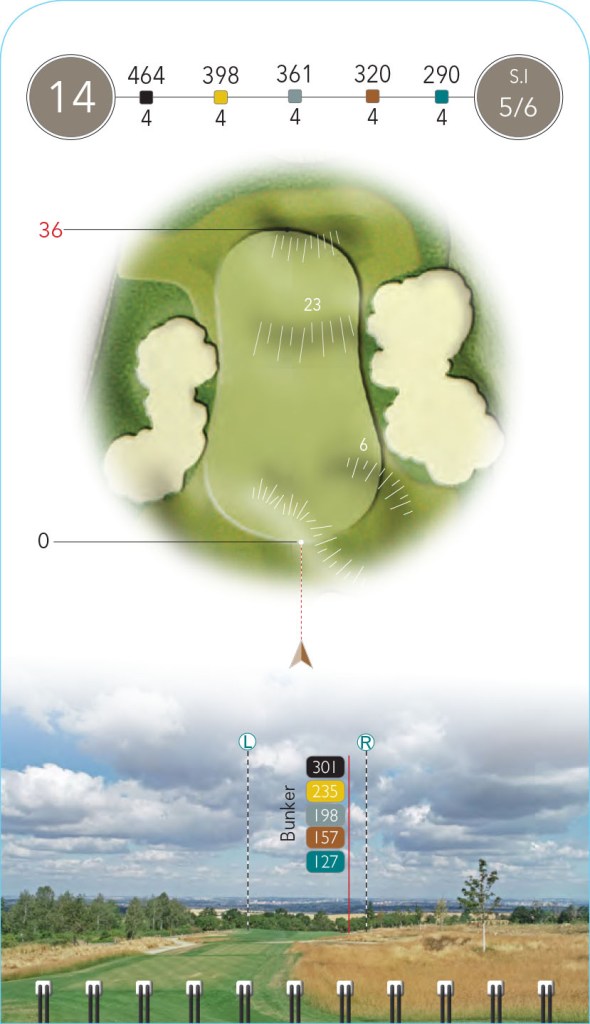
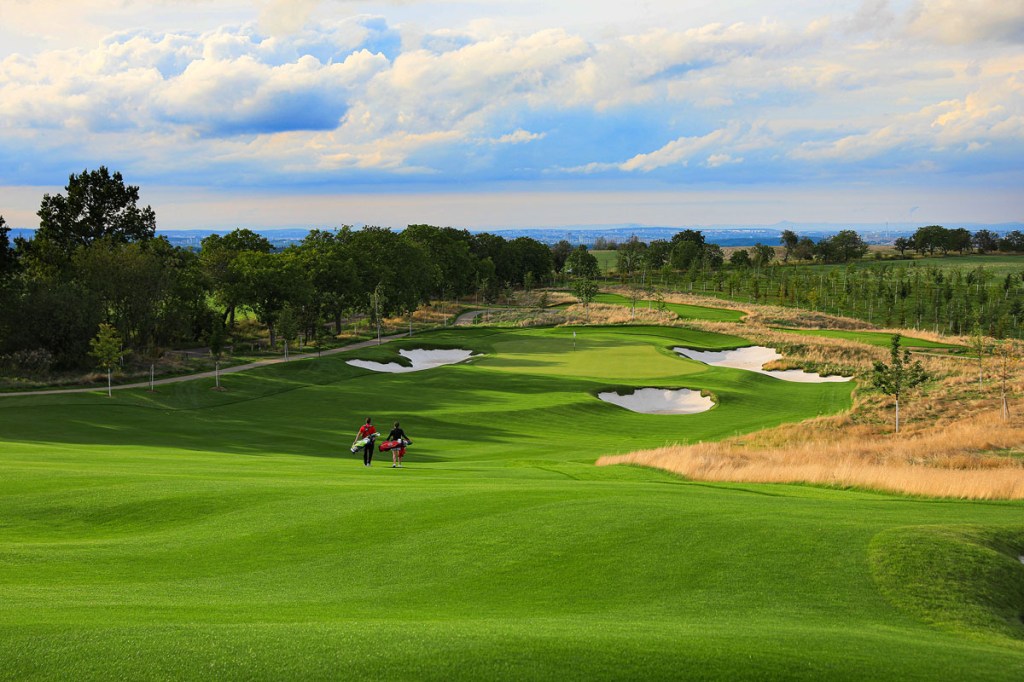
Pro’s tip:
Strategy moment: drive down the hill, or lay back, leaving a second that drops steeply to the putting surface? Either choice benefits from a drive further left than might be imagined: anything down the left edge of the fairway will kick right, feeding into the perfect position. The green is well guarded, but the flat plateau in front will allow balls landing short to run onto the putting surface.
Designer’s notes:
This hole plays shorter than its distance would indicate. Keep the ball down the left side for an open approach to this big Downhill 2nd shot. drives beyond 300 meters from the back tee will feed quickly into one of the two bunkers on the right or further into the right rough leaving an awkward 2nd shot approach.
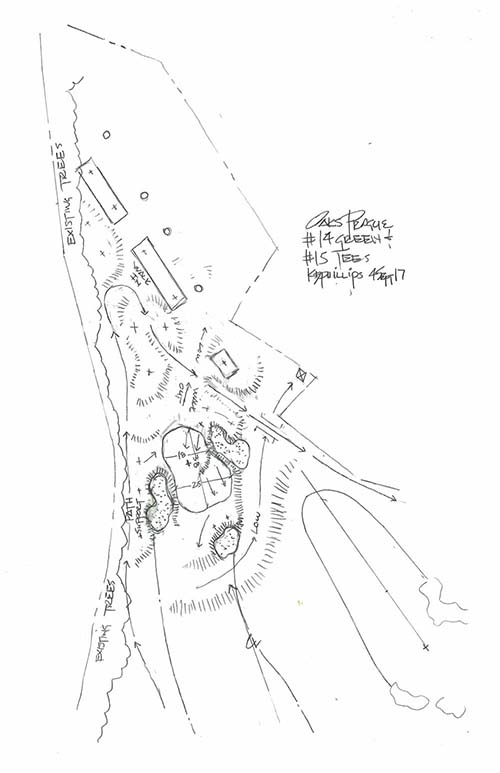
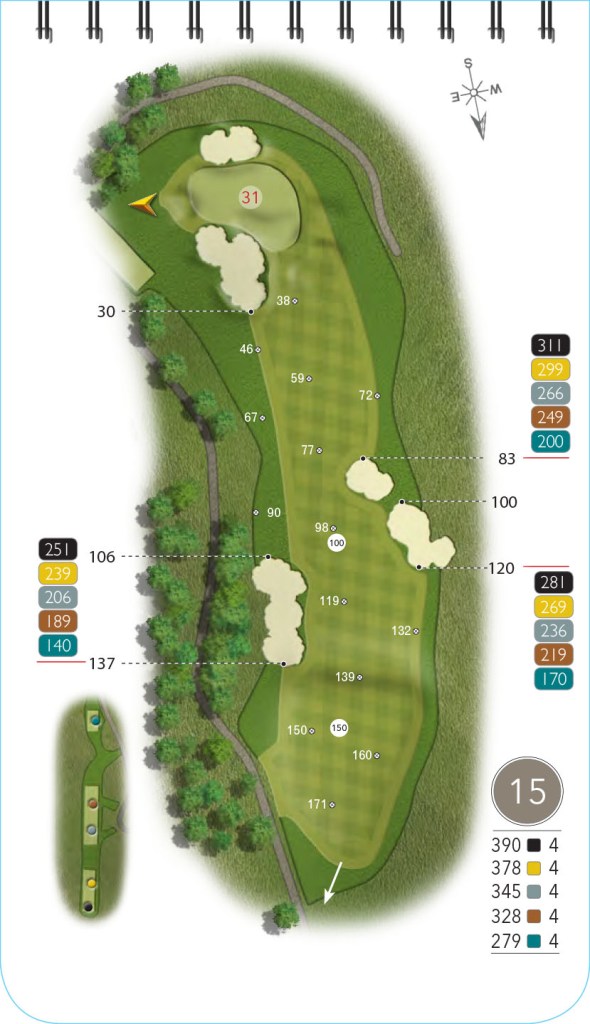
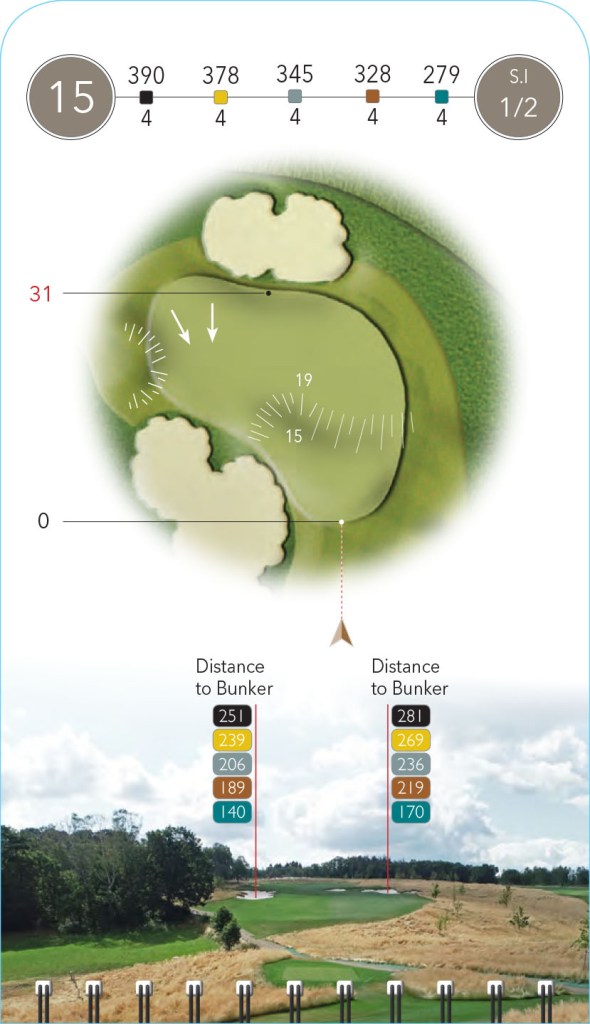
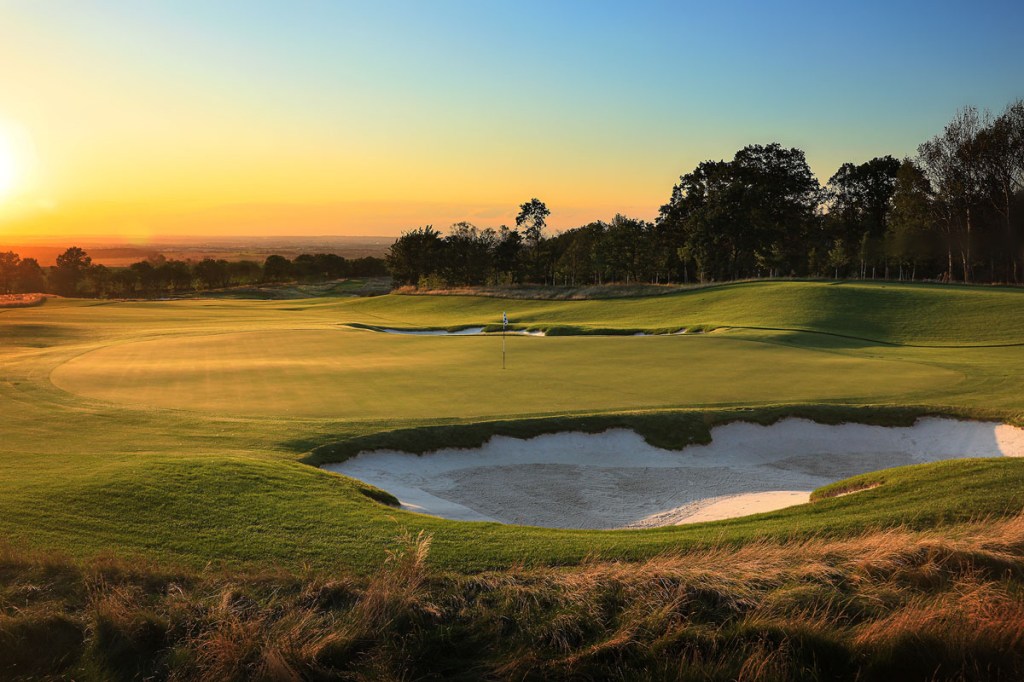
Pro’s tip:
A demanding hole. Your drive should be towards the right-hand fairway bunkers: this leaves the best angle to the green regardless of pin location. The second shot should favour a ‘short-right’ mentality as long or left guarantee a difficult save. The green is multi-tiered, and plays fast down from back to front.
Designer’s notes:
Take aim at the left of the two right side fairway bunkers. This hole is not particularly long on the scorecard, but plays long. Take an extra club on the approach. The green is quite receptive, but stay below the hole.
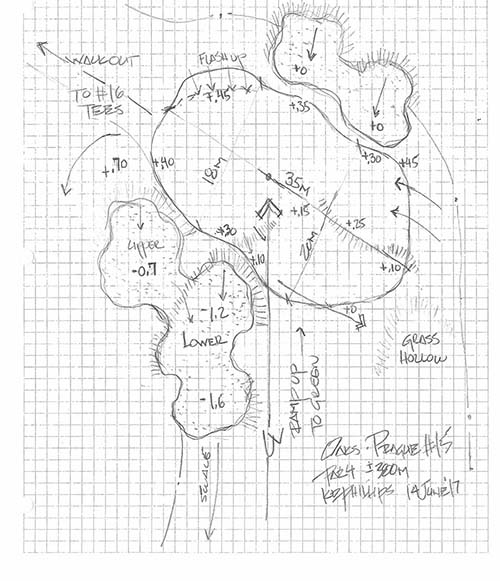
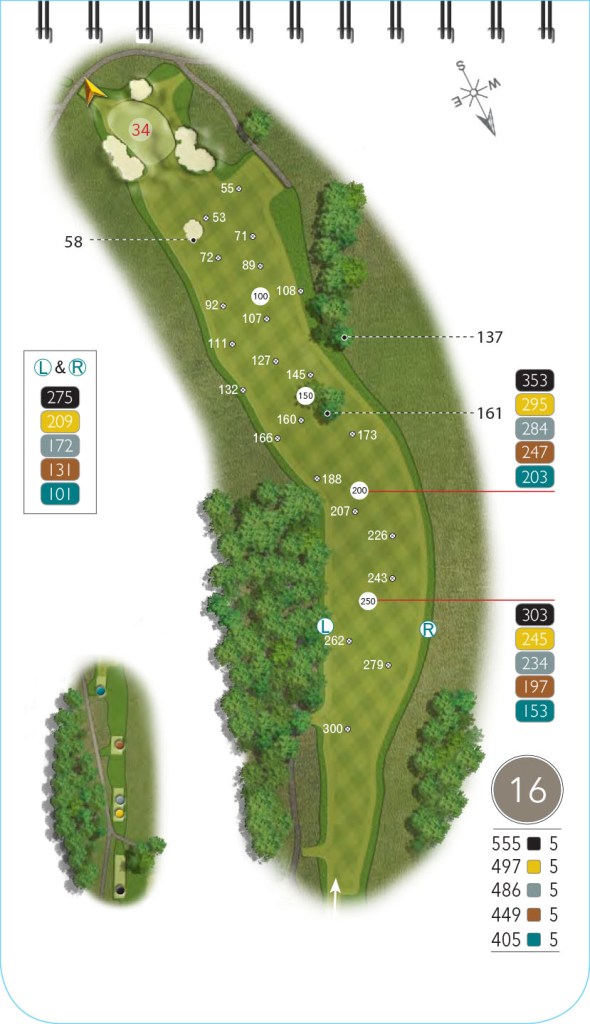
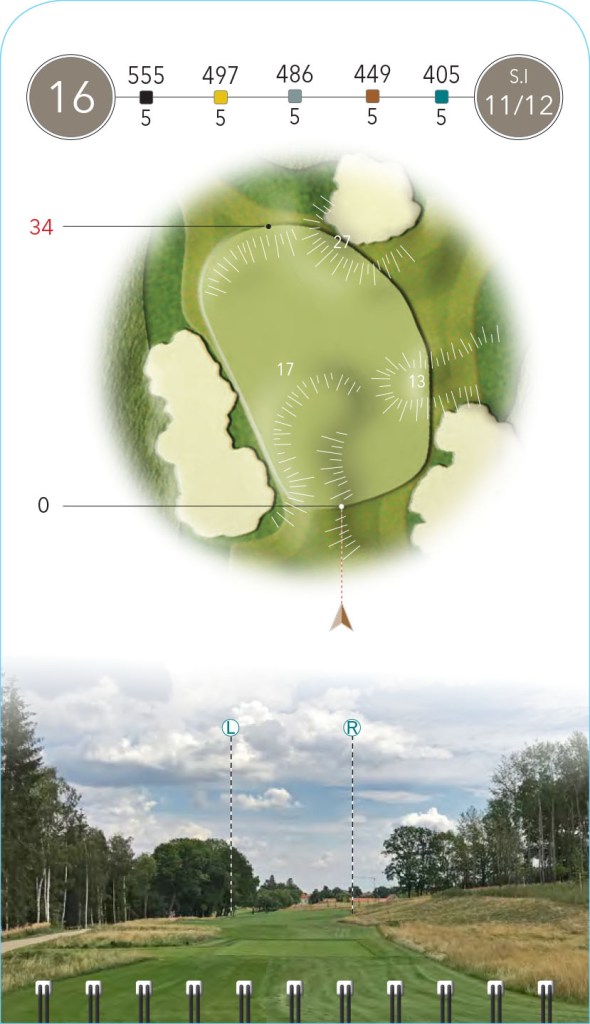
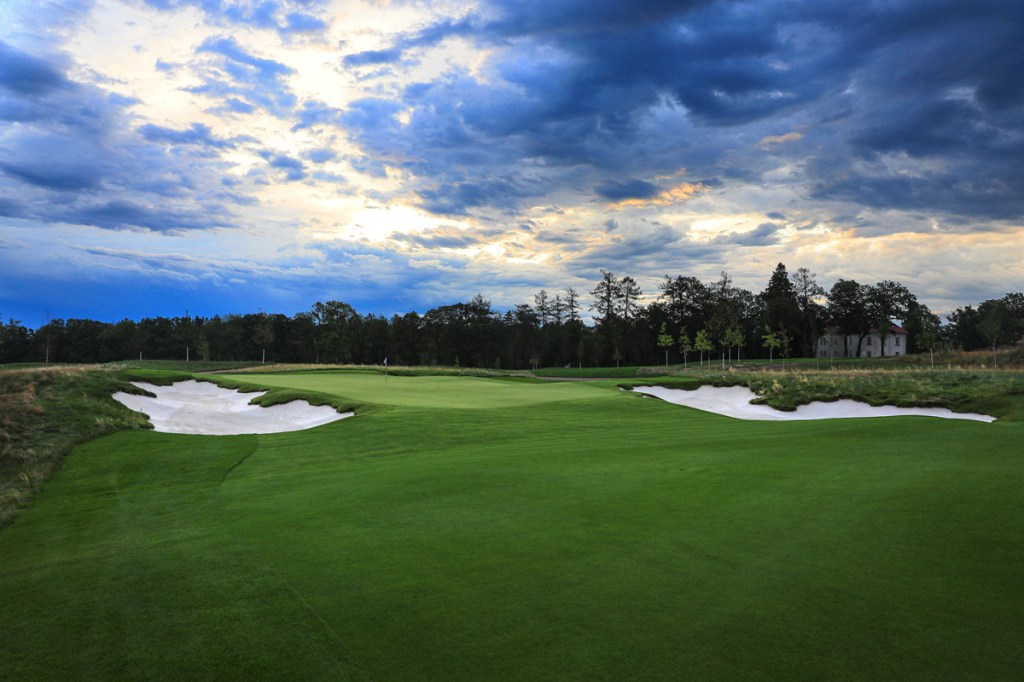
Pro’s tip:
The drive is not as narrow as it looks: the fairway opens up behind the mound and tree to the right, which is actually the better side to be. The green can be reached in two by longer hitters but the bunkers await poor shots. Ideally, play your second past the trees in the middle of the fairway and short of the fairway bunker, leaving an easy pitch to all areas of the green.
Designer’s notes:
A long drive down the right-hand side of this dogleg left par 5 provides the best angle on the 2nd shot. Shots down the left-hand side of the fairway are defended by a large copse of mature trees to 345m from the championship tee. The central small bunker 50m in front of the green gives players the option to carry in order to reach the green in two shots.
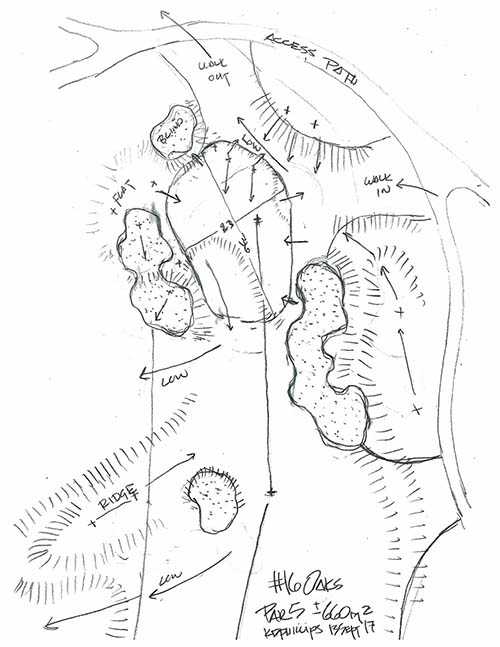
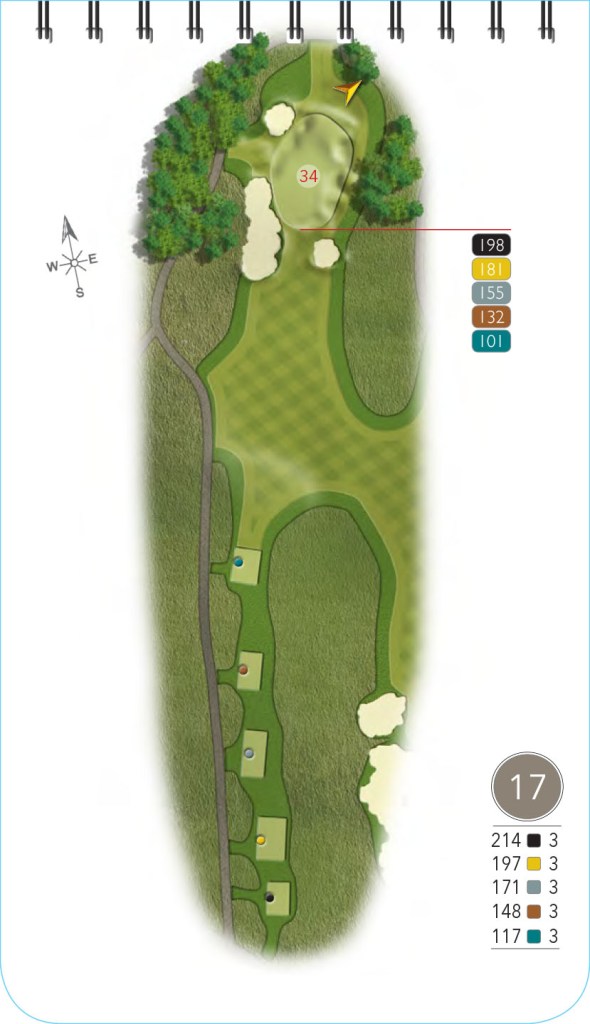
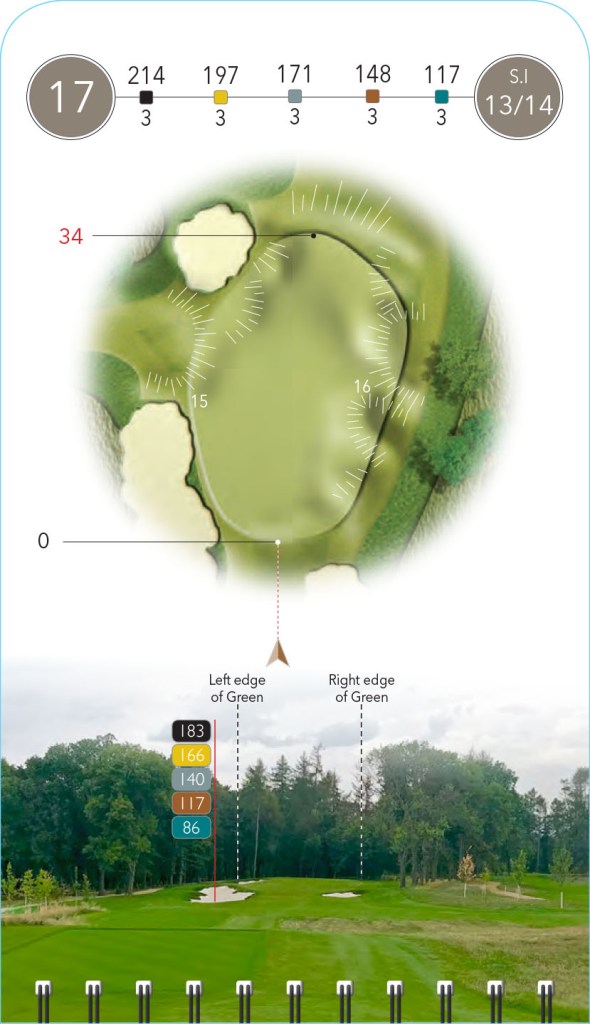
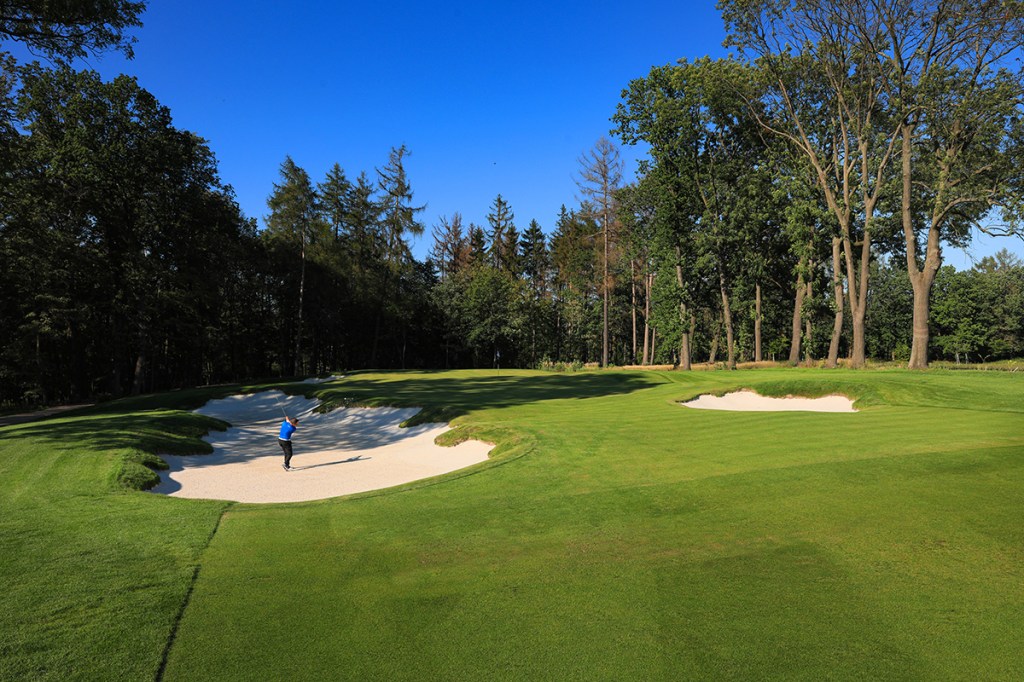
Pro’s tip:
A long par 3: club selection is key, especially if the wind has picked up. Playing downhill, the ball will tend to roll through the back of the green, so shots can be played short and run onto the green. Enjoy the view from the tee before dropping into Nature’s amphitheatre of wood.
Designer’s notes:
Long, downhill, downwind, well bunkered, and surrounded by forest, the par 3 17th is a challenging and great par 3, especially this late in the round. A well-played shot can yield a birdie, but just the slightest miss play can yield a bogey.
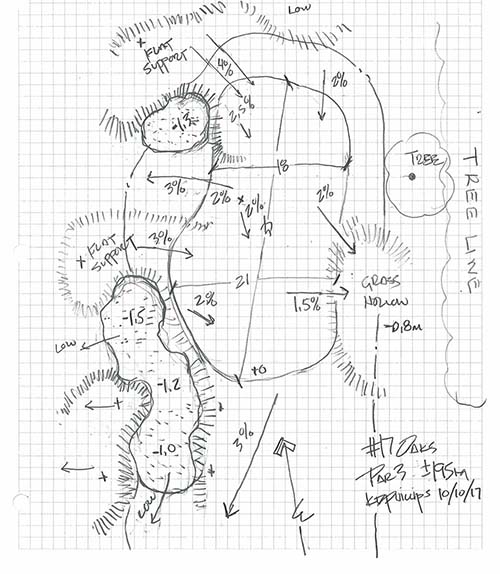
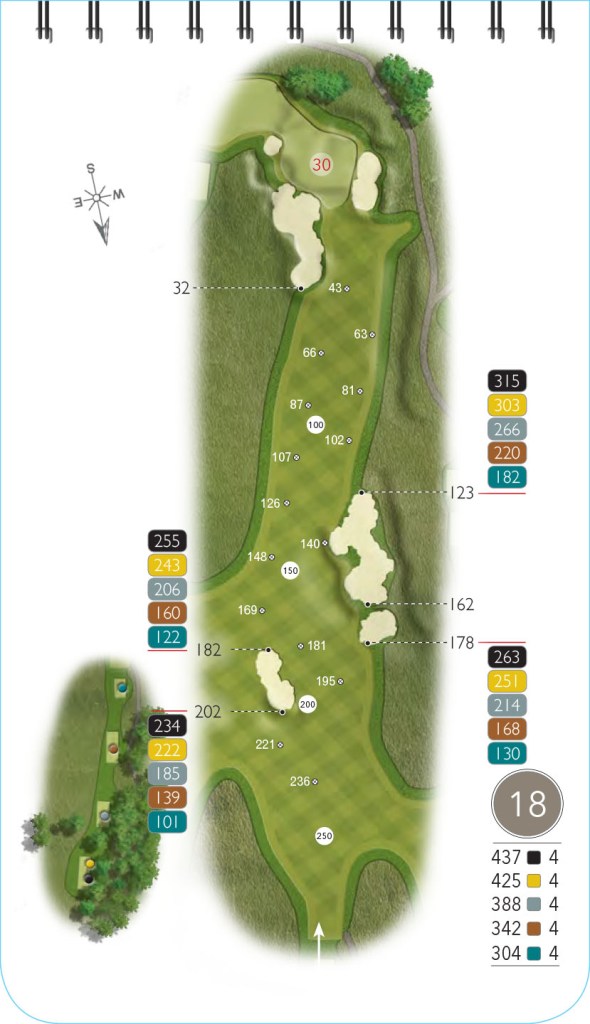
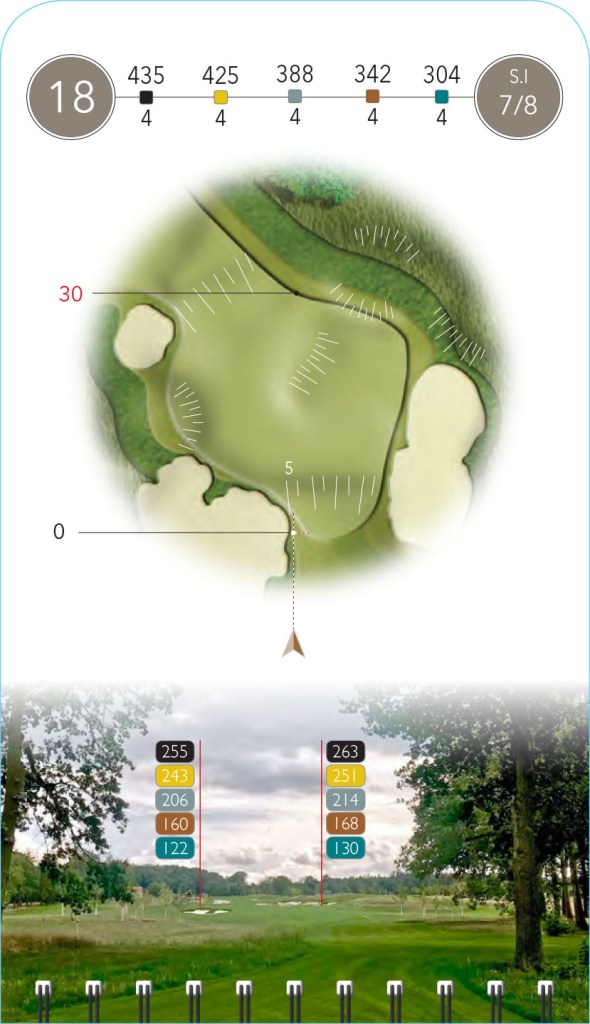
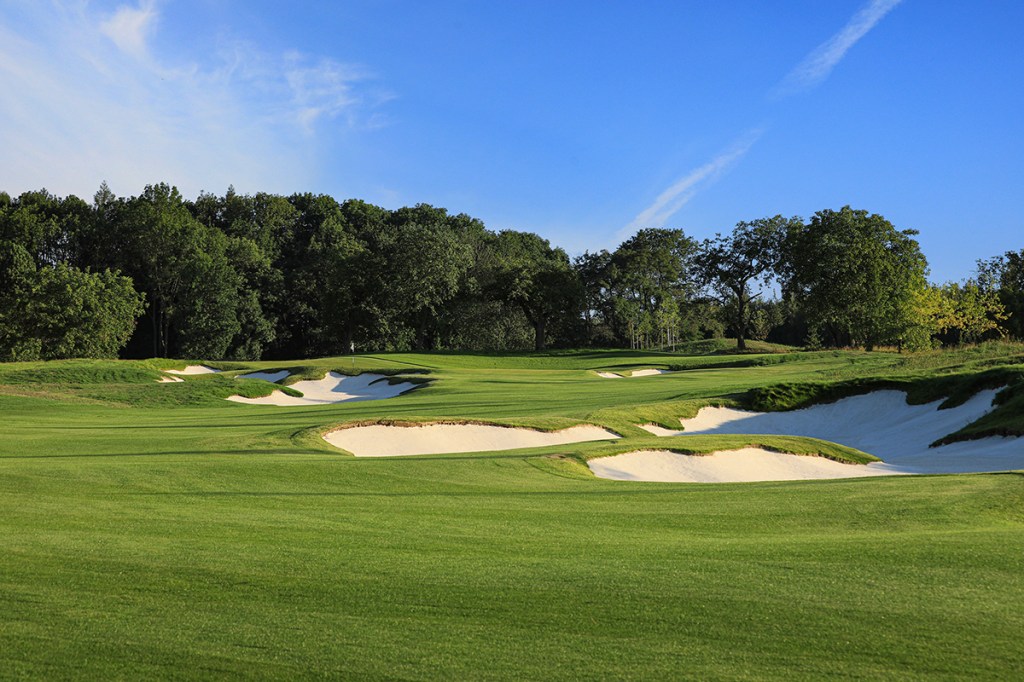
Pro’s tip:
A strong finishing hole, with many bunkers ready to capture a poorly thought-out drive. It’s easier to make your approach from the right side, whether as a second from before the bunkers, or as a further shot with them behind you. The severely uphill approach makes stopping the ball on the surface more challenging, but you can utilise the steep bank towards the putting green (back left) to help bring the ball back to the hole.
Designer’s notes:
The crescendo. Play down the right side of the fairway off the tee avoiding the large bunker on the right. From this position, players are rewarded with the best angle to the green. Playing uphill and normally into the wind, take an extra club on your approach. One of my favorite greens on the course.
